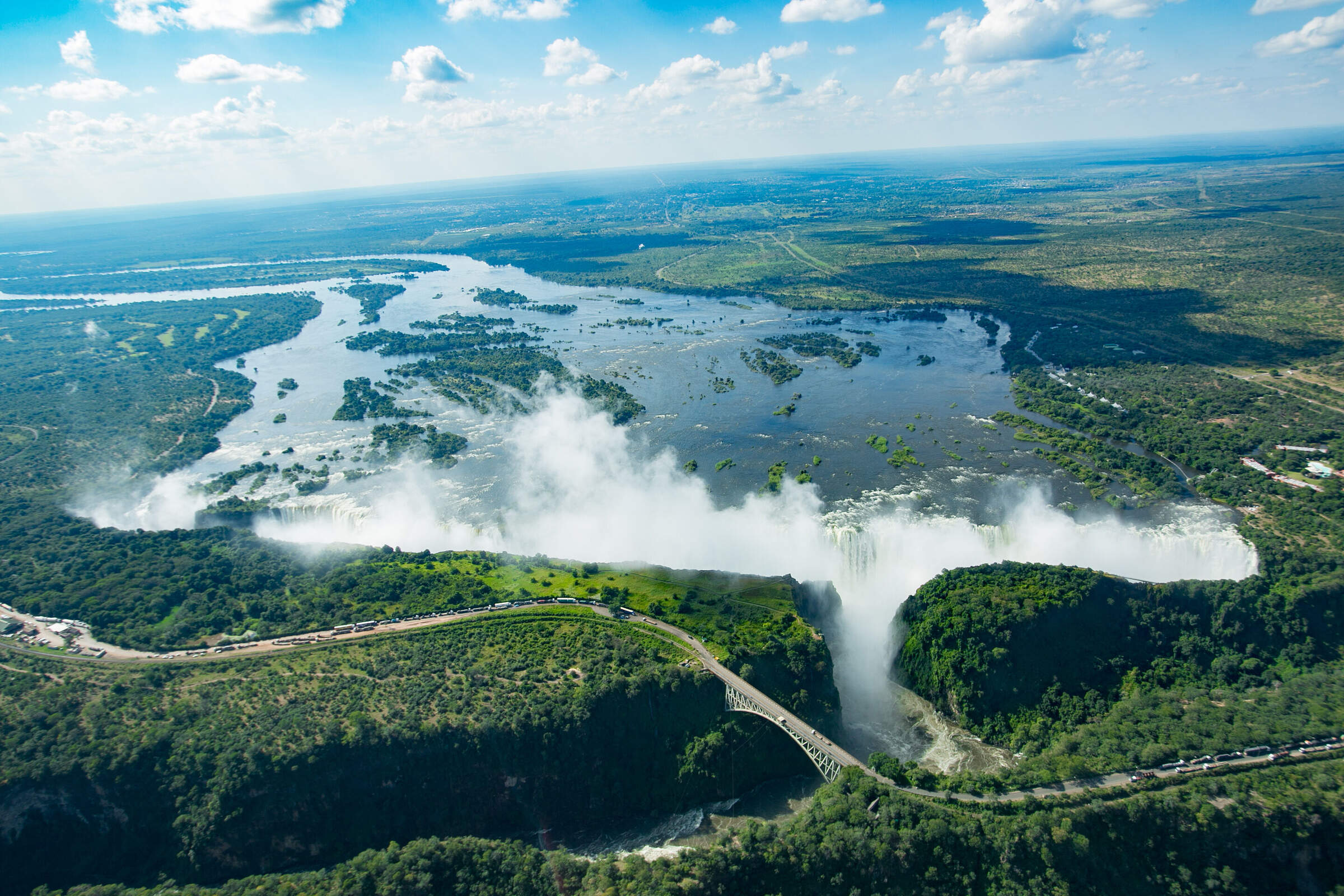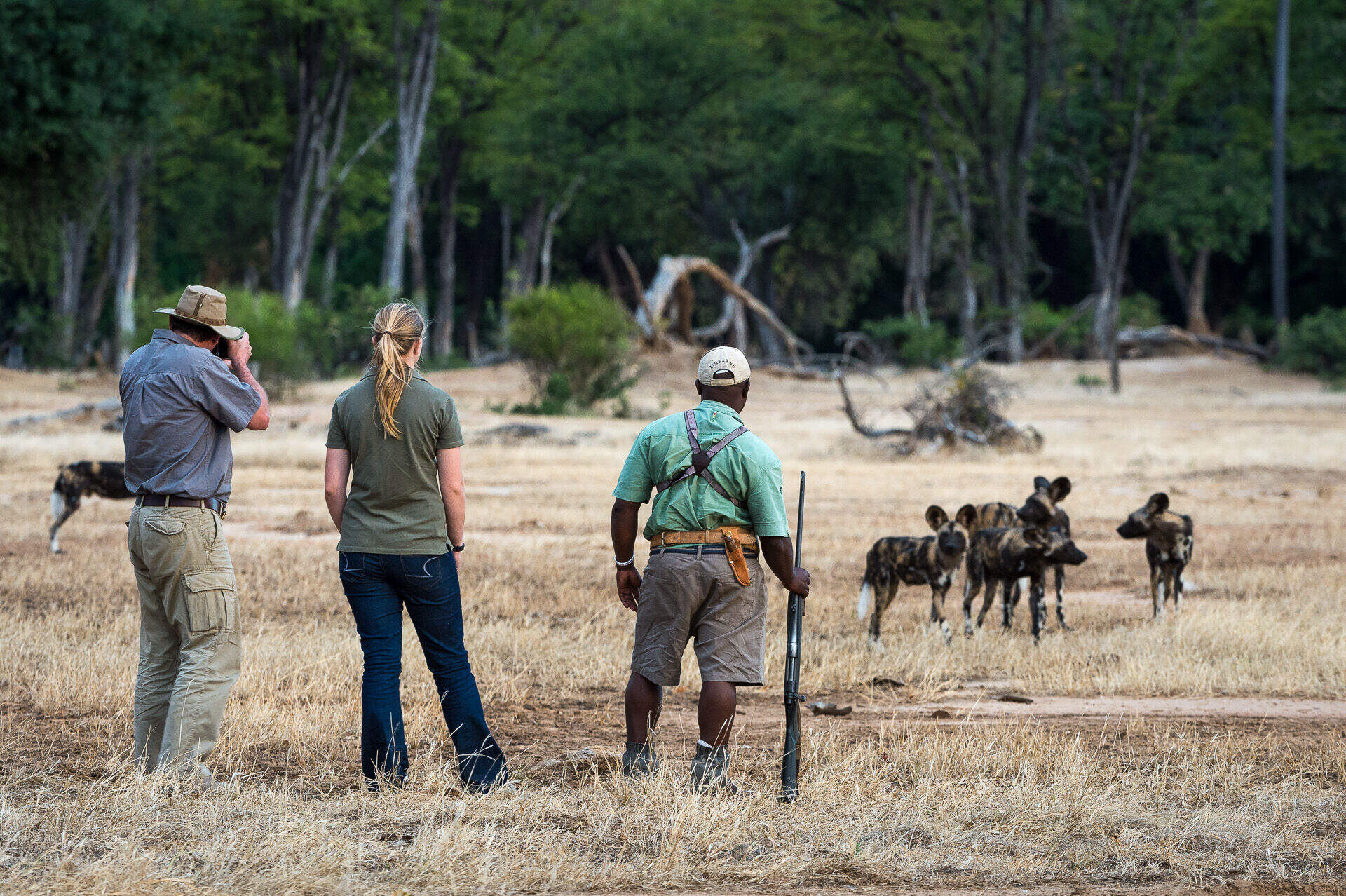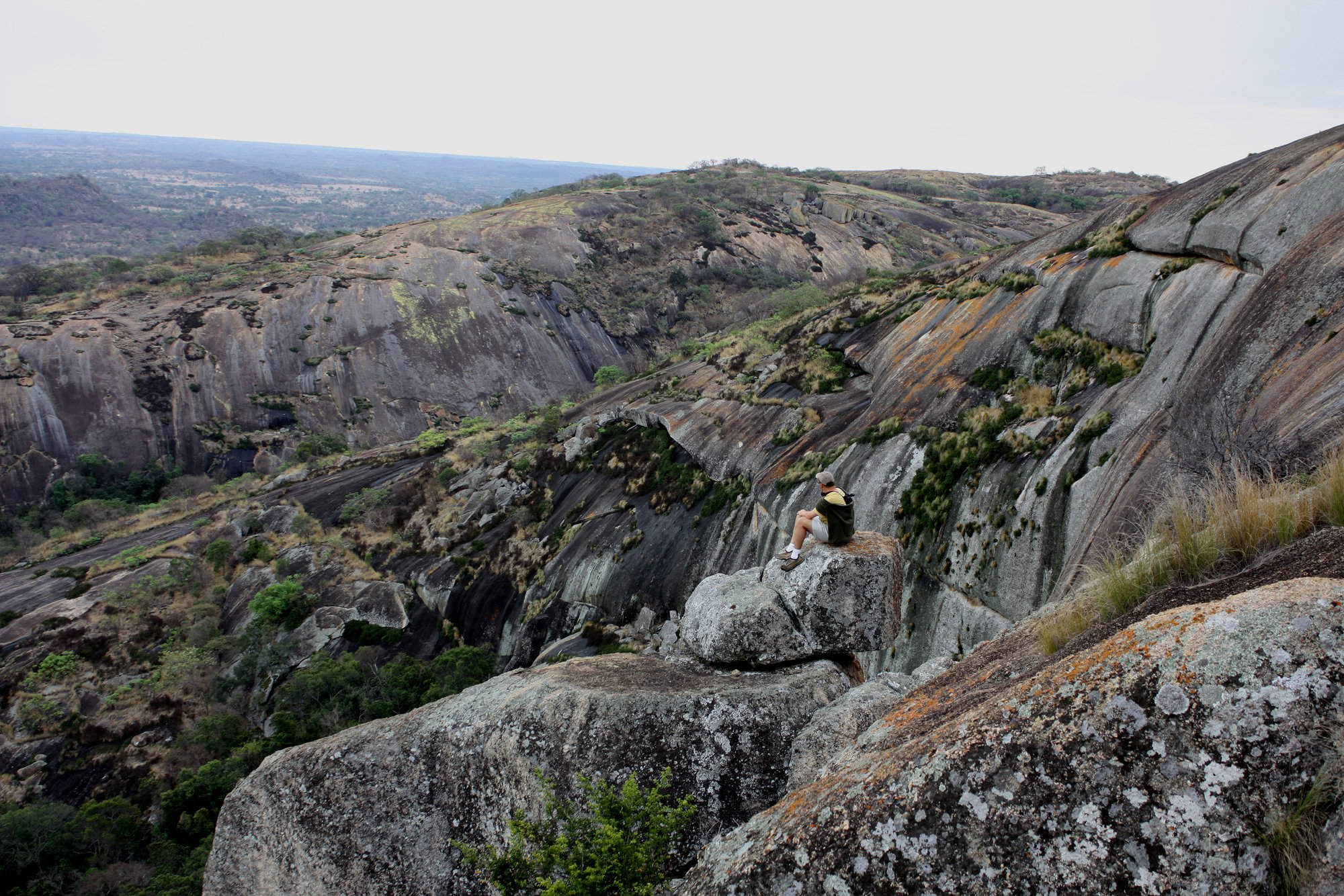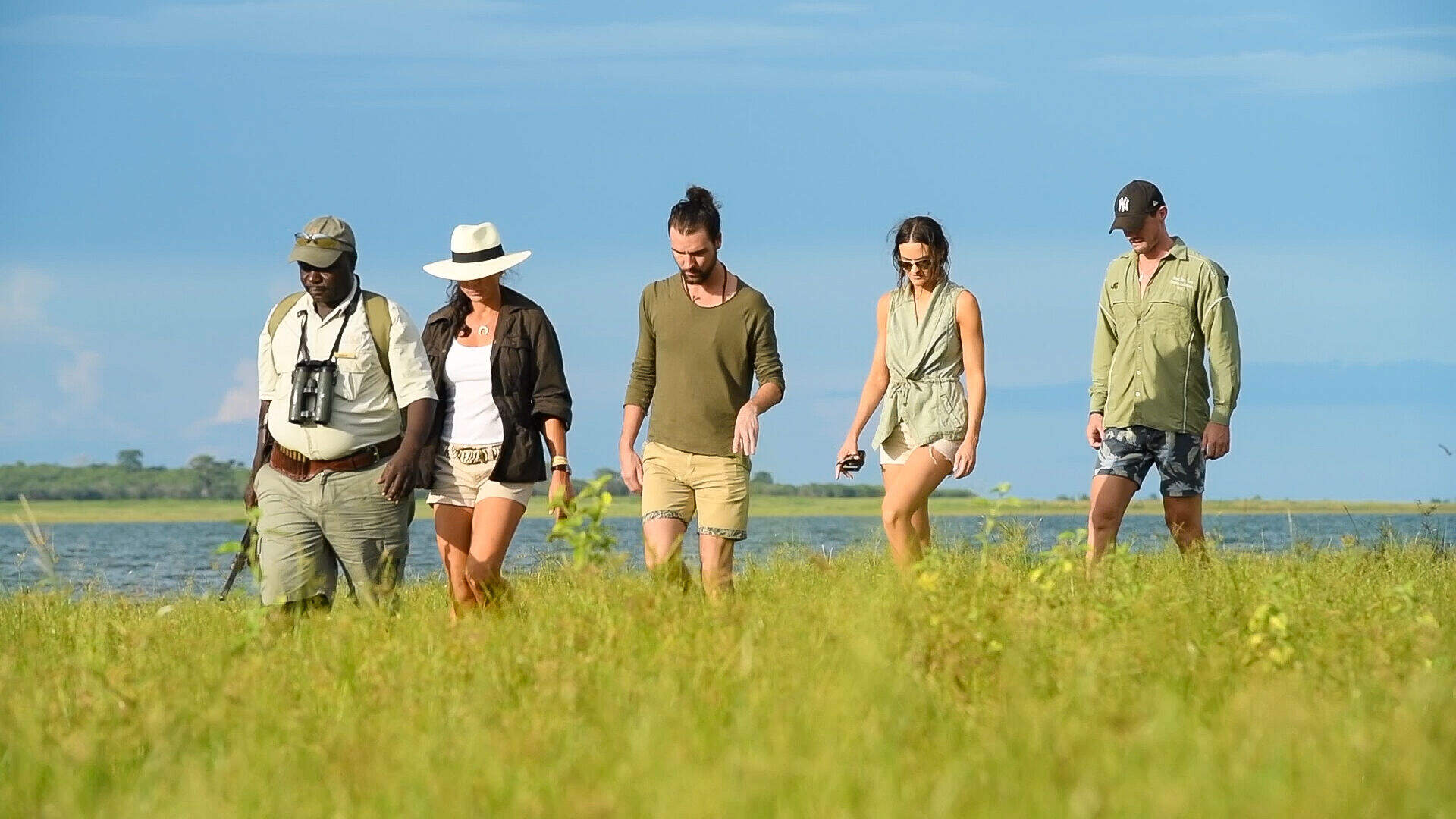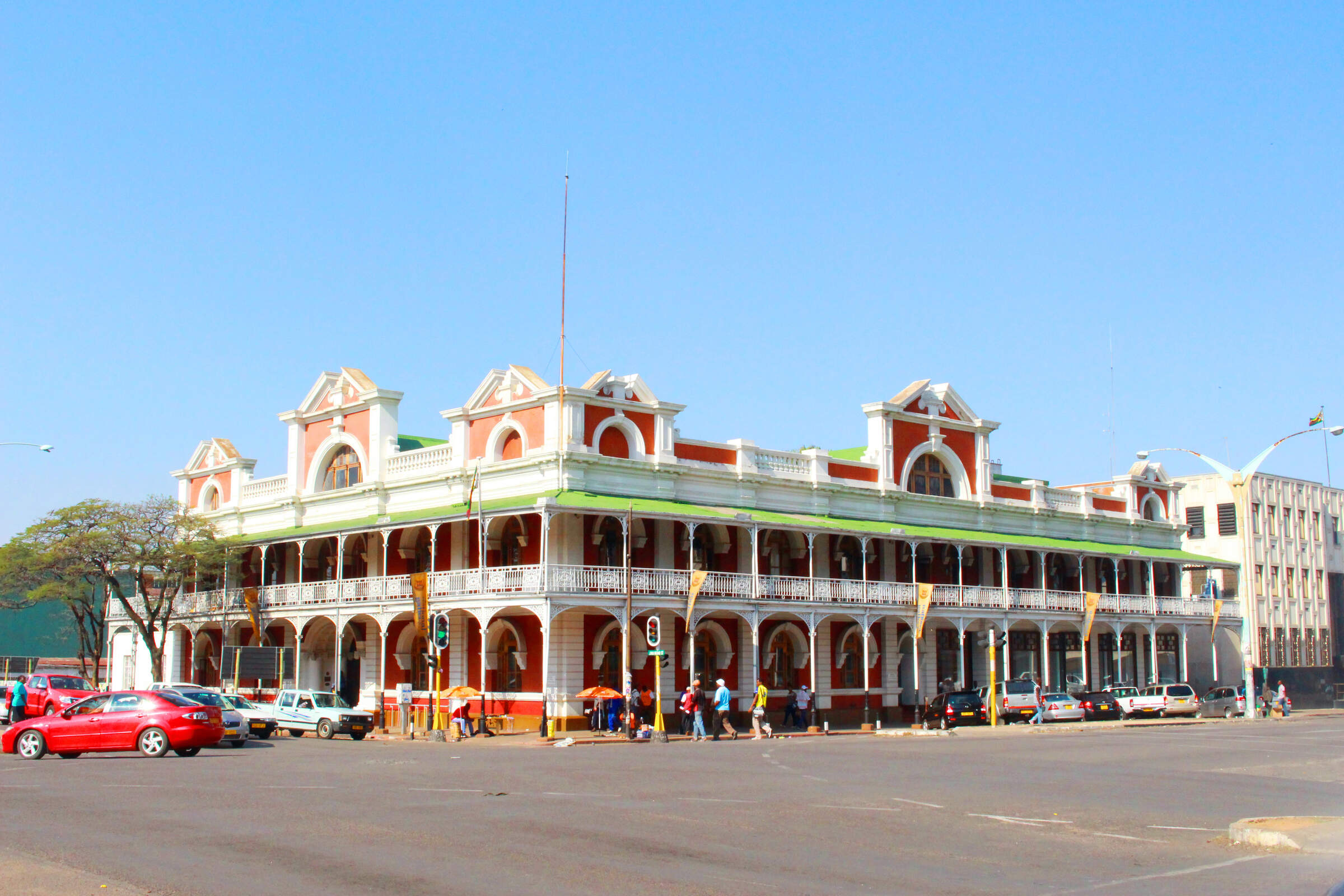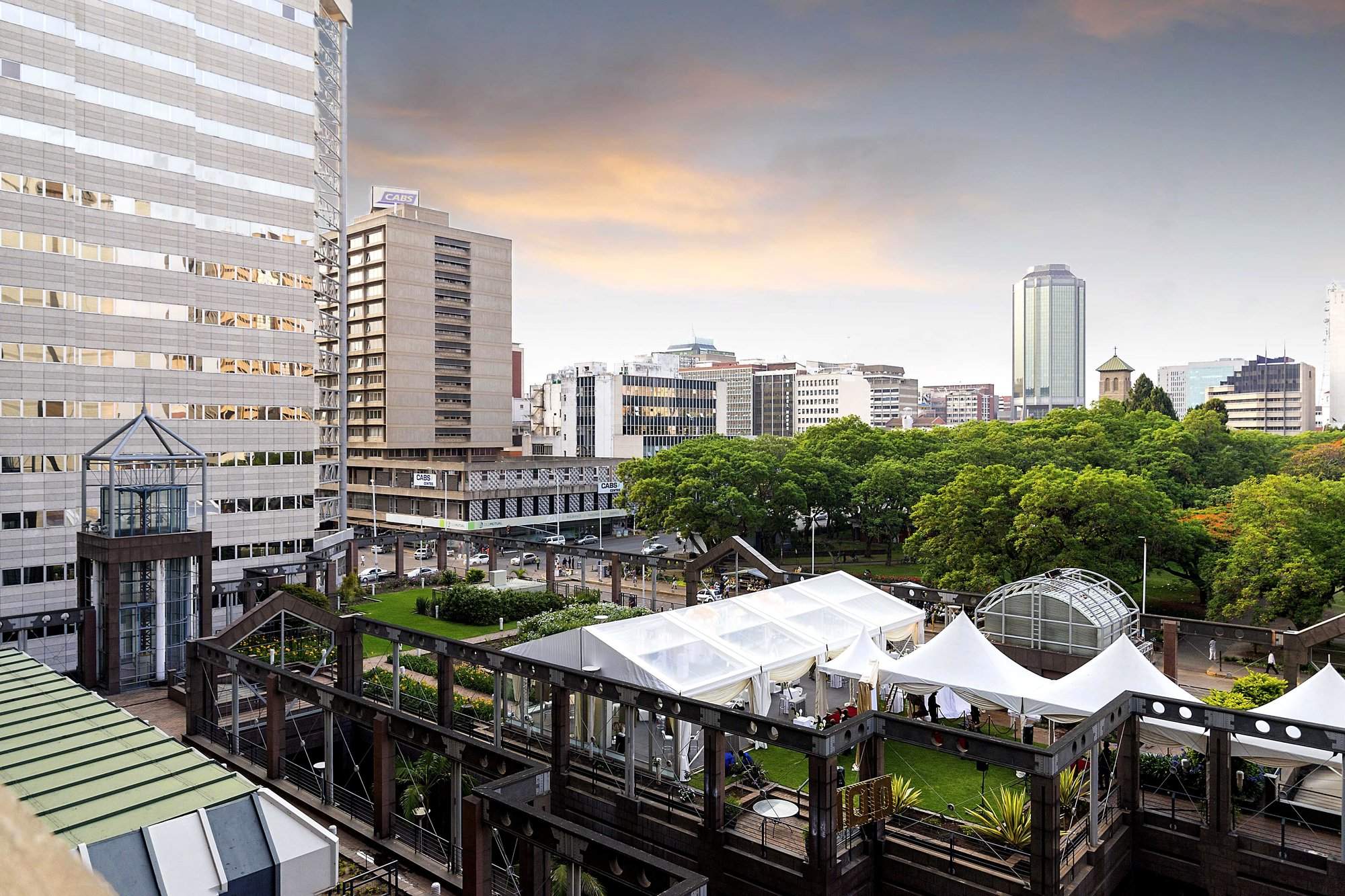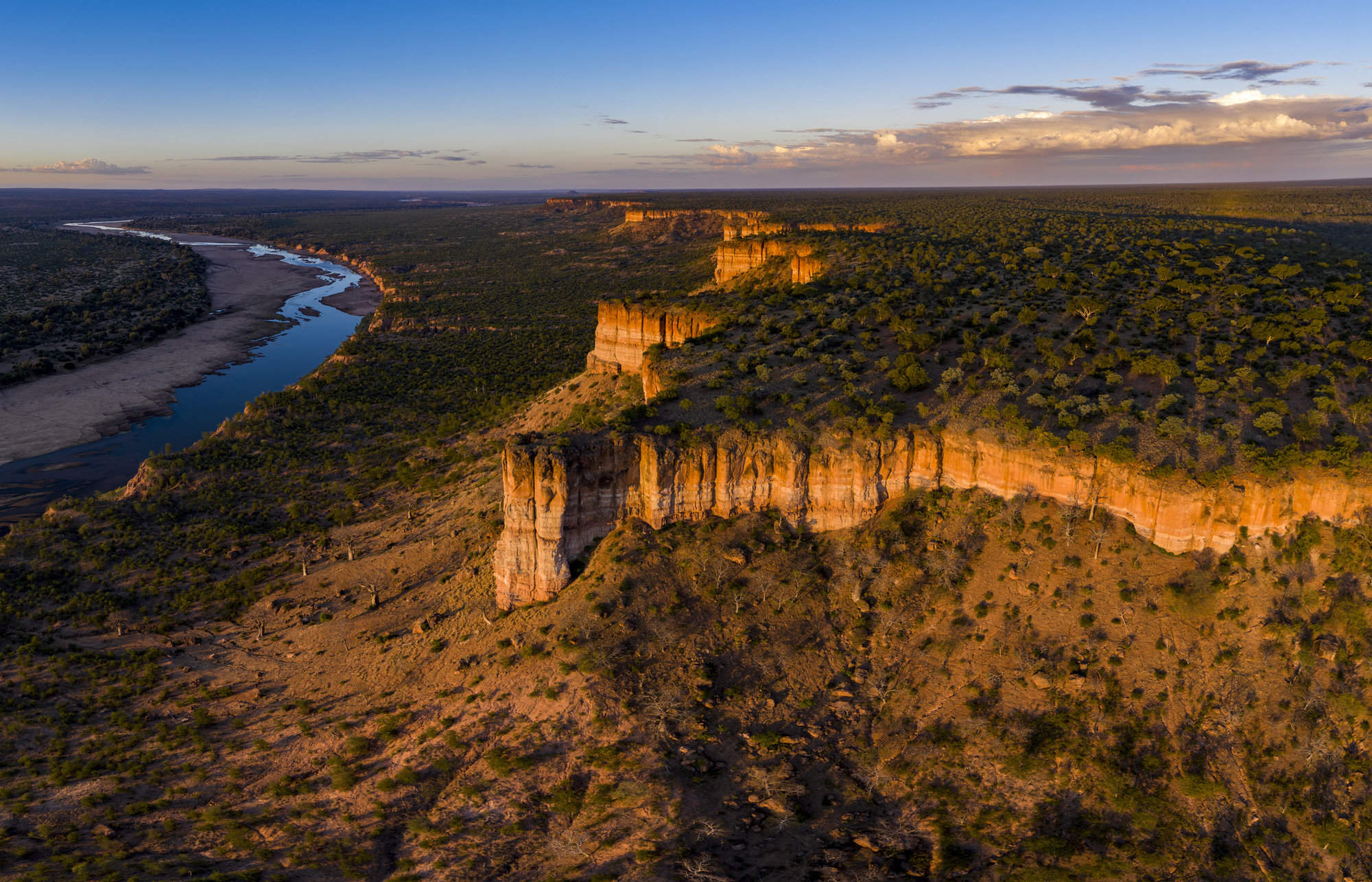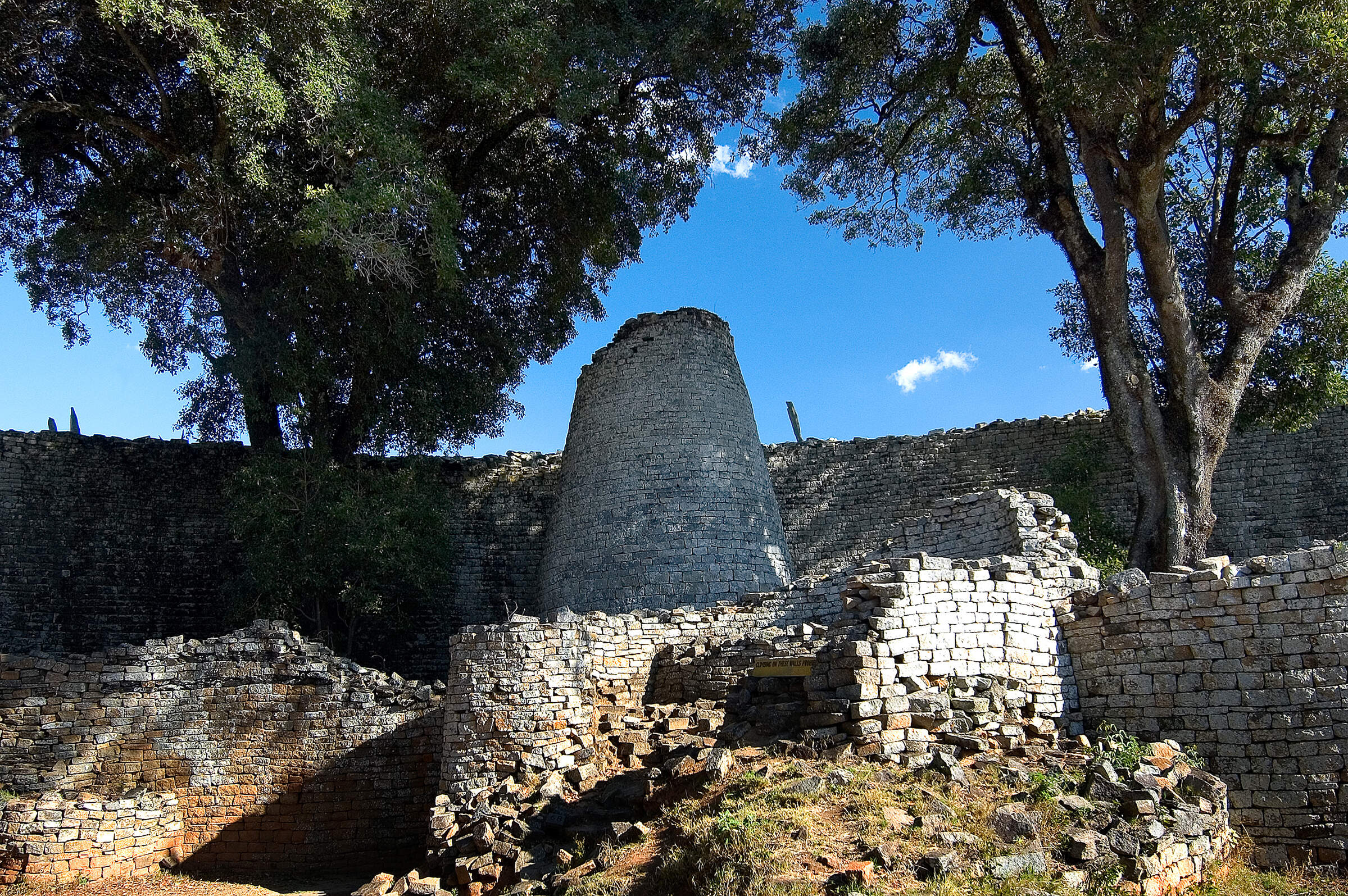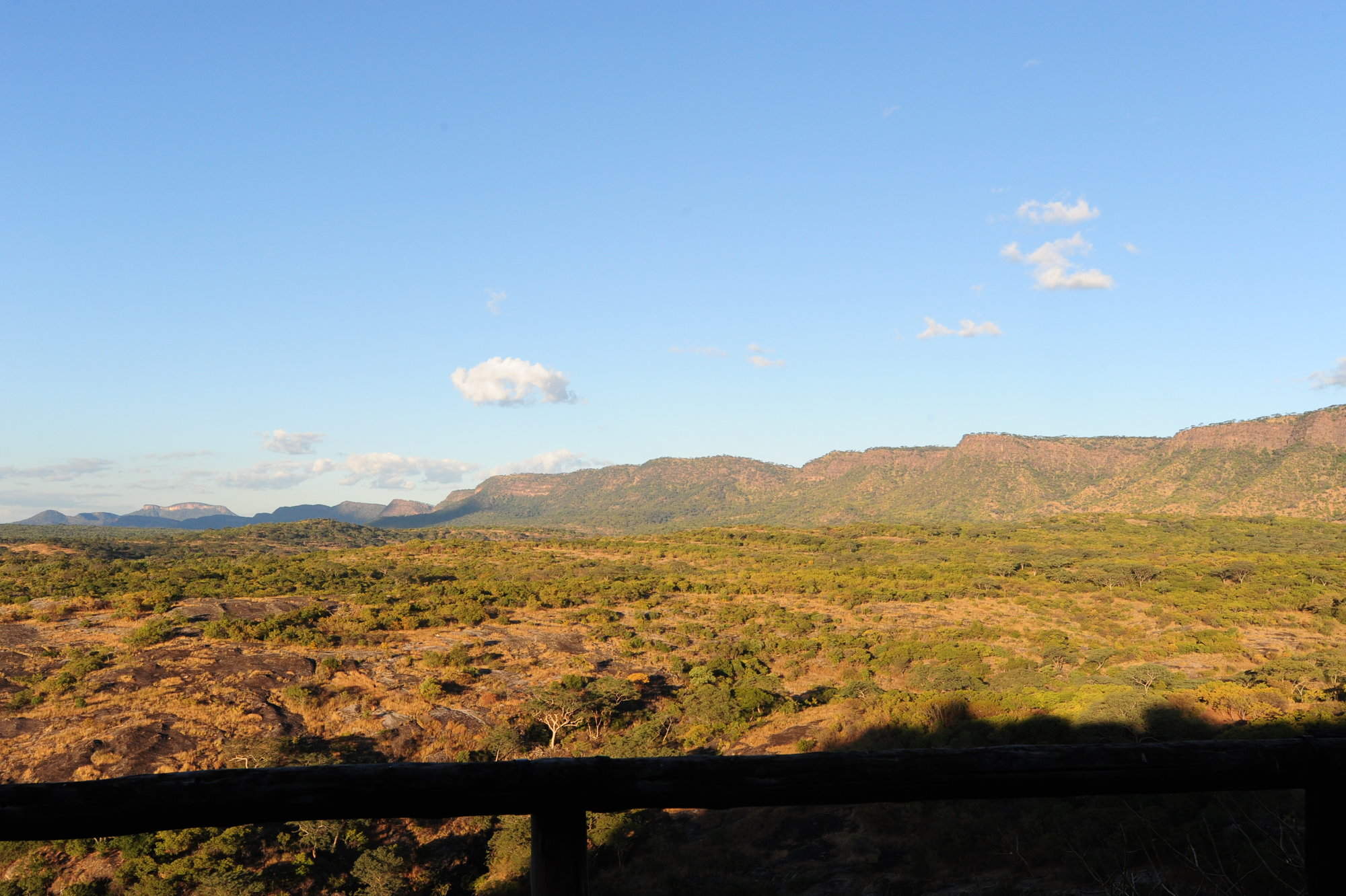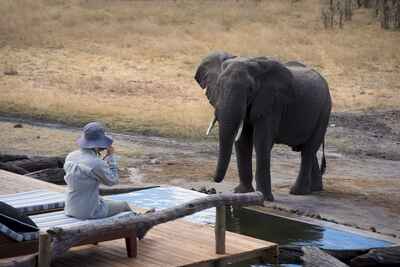
Hwange has a large elephant population
Hwange offers a myriad of safari experiences
... including day and night game drives
You may spot a number of lions as well.
Hwange National Park
Hwange National Park
Zimbabwe's largest national park encompasses a variety of habitats from Kalahari sandveld to mopane woodlands.
Bordering Botswana, Hwange National Park is Zimbabwe's largest game park with an area of 14,600km². Its sheer size means that its scenery, vegetation and game vary hugely, ranging from the semi desert scrub on the edge of the Kalahari in the south, to forests, granite hills and valleys of mopane woodlands in the north.
The national park is home to over 100 mammal species, including lion, leopard and rhino, and is known for its large population of elephant. This game park is very accessible and all the safari camps here offer day and night game drives and most also offer walking safaris. The highest numbers of animals are spotted in the dry season (August to October) when the wildlife congregates around the shrunken water holes.
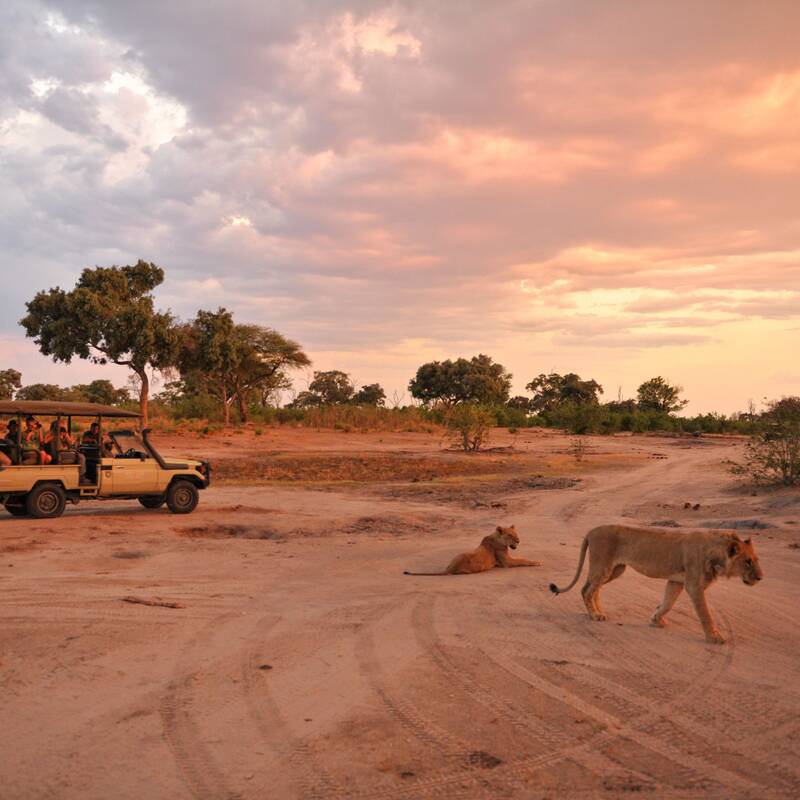
Best safaris in Hwange National Park
Hwange itself is varied and exciting, like our safaris there.
Some safaris focus purely on Hwange, like our Side-Striped Jackal Safari. Others combine it with nearby Victoria Falls and perhaps Matobo Hills, like the great and great-value Klipspringer Safari. Then for the ultimate big game Zimbabwe safari, study our classic Lion and Buffalo safaris which pair it with Mana Pools.
Less obvious pairing, until you see a map, is to link Hwange with Botswana, but our Great Egret Safari shows how well this can work.
All our trips are tailor-made, contact us to find your perfect safari.
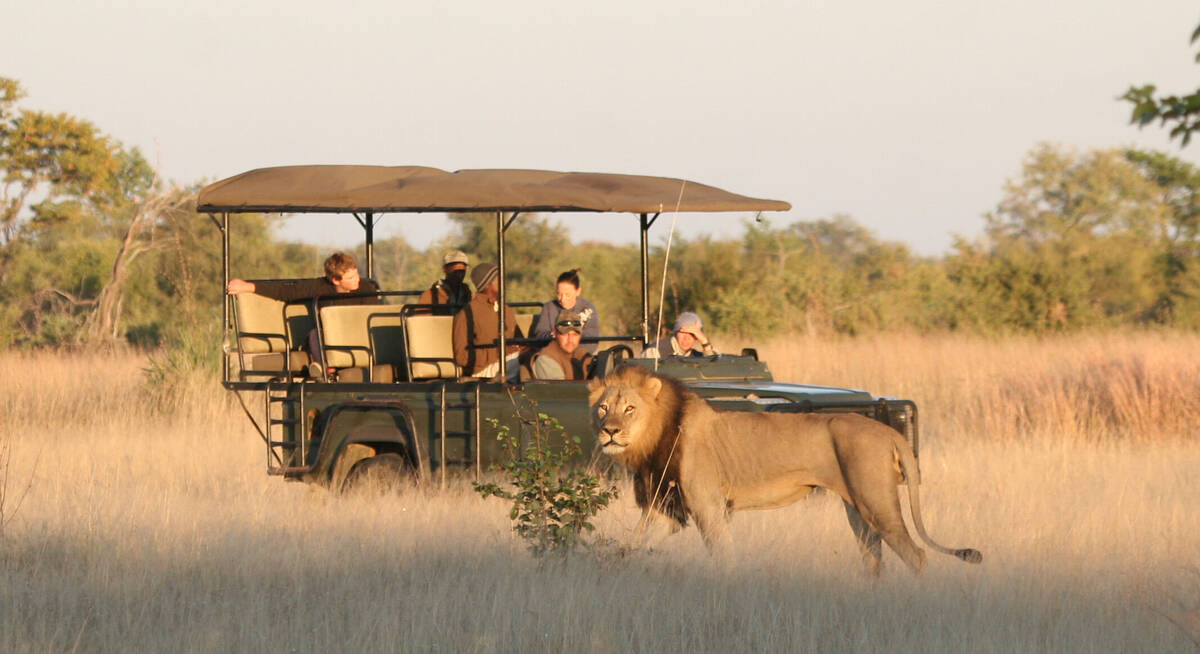
Side-striped Jackal Safari
6 days • 2 locations
VICTORIA FALLS AIRPORT TO VICTORIA FALLS AIRPORT
Get an in-depth experience of Zimbabwe’s colossal Hwange National Park, staying at two experience-focused camps with excellent guiding in contrasting areas. An adventurous safari for the real enthusiast.
US$3,930 - US$6,420 per person
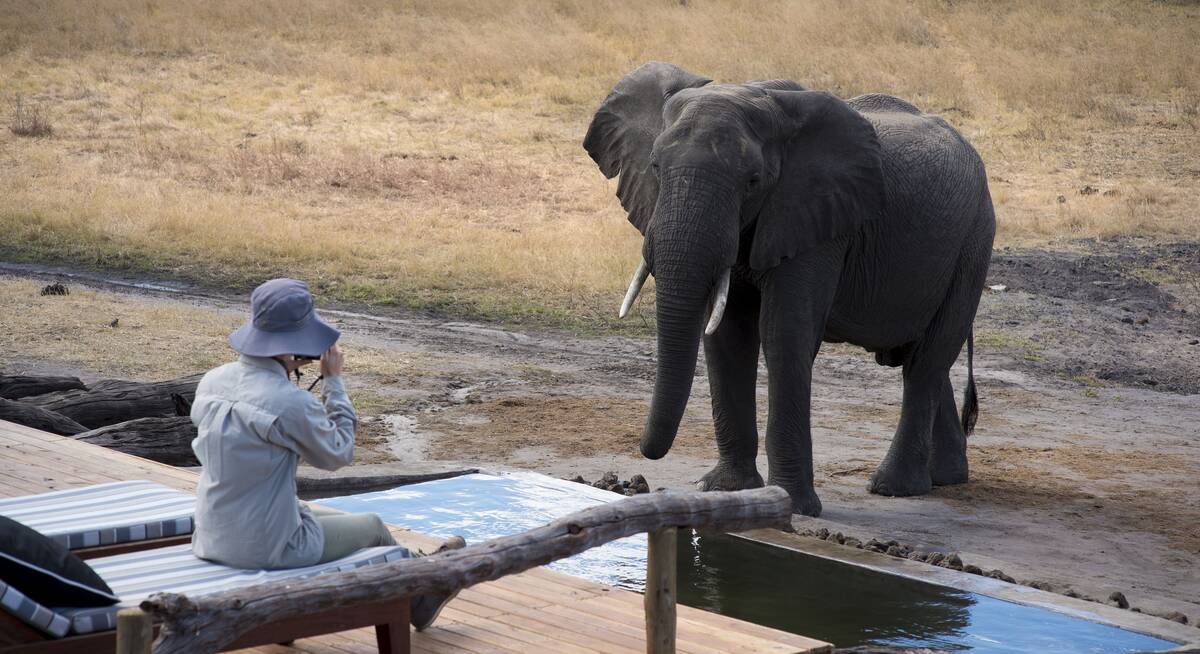
Ground Hornbill Safari
9 days • 3 locations
VICTORIA FALLS AIRPORT TO BULAWAYO AIRPORT
This Zimbabwean odyssey explores Hwange National Park from two small camps, renowned for their great guiding, before ending with insights into cultural history, a little luxury and first-class rhino tracking in the Matobo Hills.
US$5,540 - US$8,560 per person
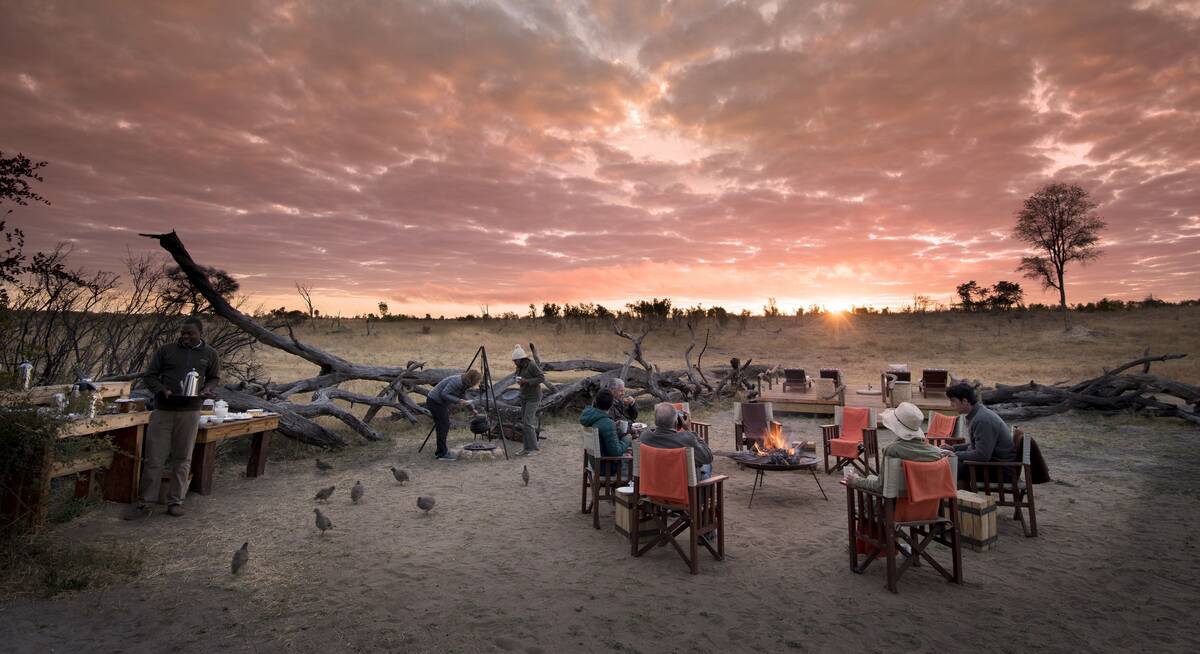
Great Egret Safari
12 days • 4 locations
MAUN AIRPORT TO VICTORIA FALLS AIRPORT
This wonderfully varied adventure combines Botswana's Okavango Delta and a live-aboard houseboat safari on the Chobe River, with big game in Zimbabwe's dry Hwange National Park and the stupendous Victoria Falls.
US$10,360 - US$17,410 per person
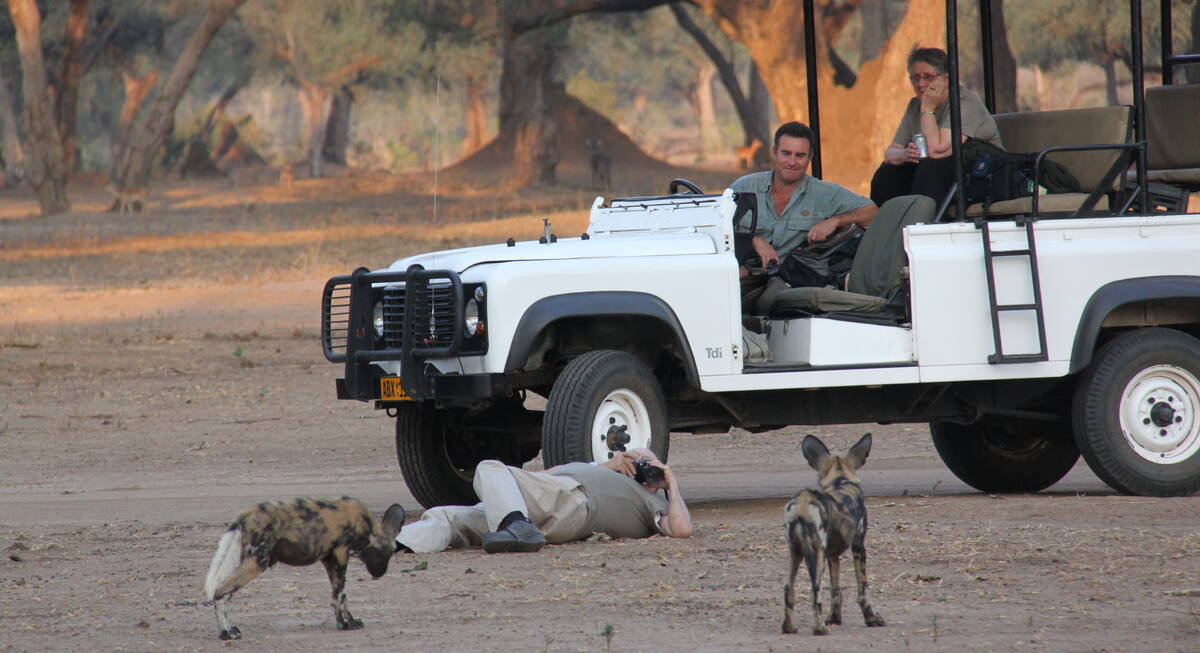
Lion Safari
7 days • 2 locations
VICTORIA FALLS AIRPORT TO VICTORIA FALLS AIRPORT
The classic Expert Africa Zimbabwe safari. Combining two of our favourite independent camps, each run by celebrated guides, exciting game drives, world-class walks and canoeing in premier wildlife watching destinations.
US$7,300 - US$10,280 per person
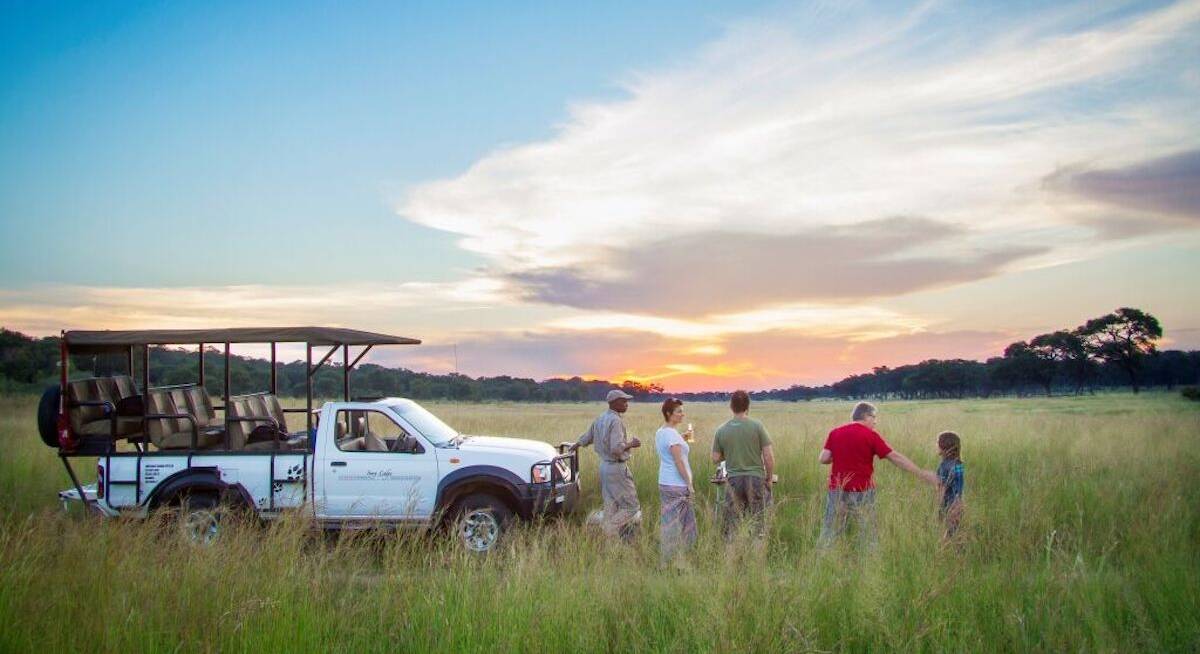
Klipspringer Safari
8 days • 3 locations
VICTORIA FALLS AIRPORT TO BULAWAYO AIRPORT
An outstanding-value Zimbabwe safari exploring Victoria Falls and two contrasting locations in western Zimbabwe – Hwange and the Matobo Hills – giving you a real feel for Zimbabwe, its people and wildlife.
US$3,040 - US$3,570 per person
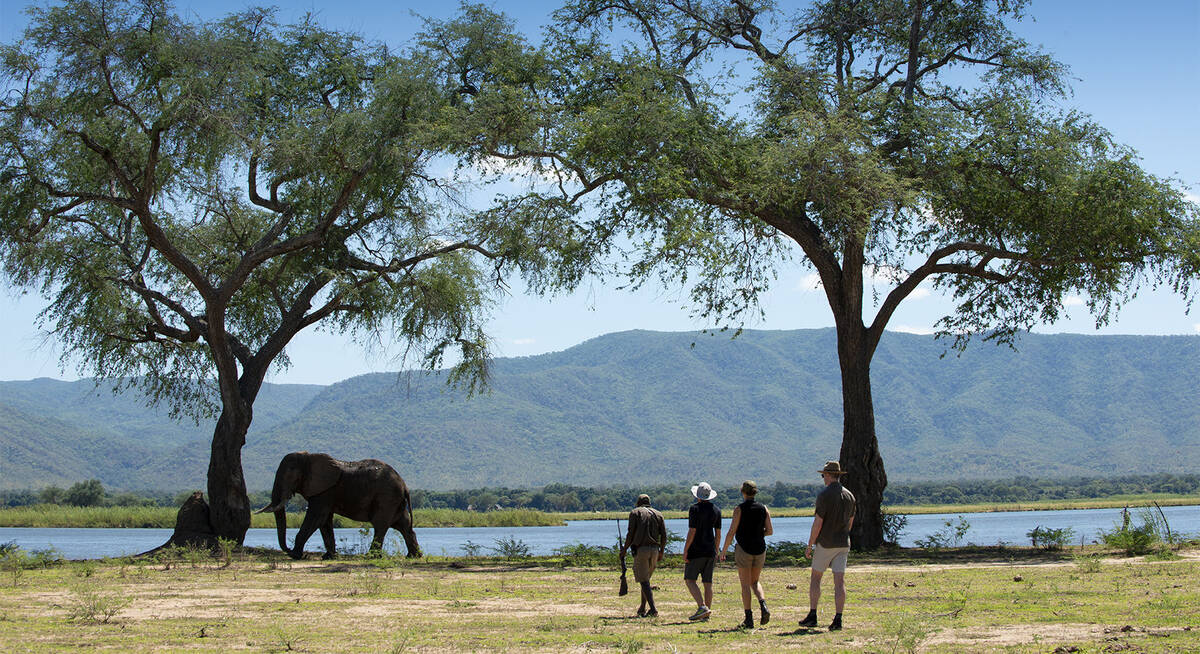
Grysbok Safari
9 days • 3 locations
VICTORIA FALLS AIRPORT TO HARARE AIRPORT
Discover three of Zimbabwe’s iconic destinations in style, flying between Hwange, Mana Pools and Lake Kariba on this varied safari adventure staying at authentic yet luxurious camps.
US$11,070 - US$16,110 per person
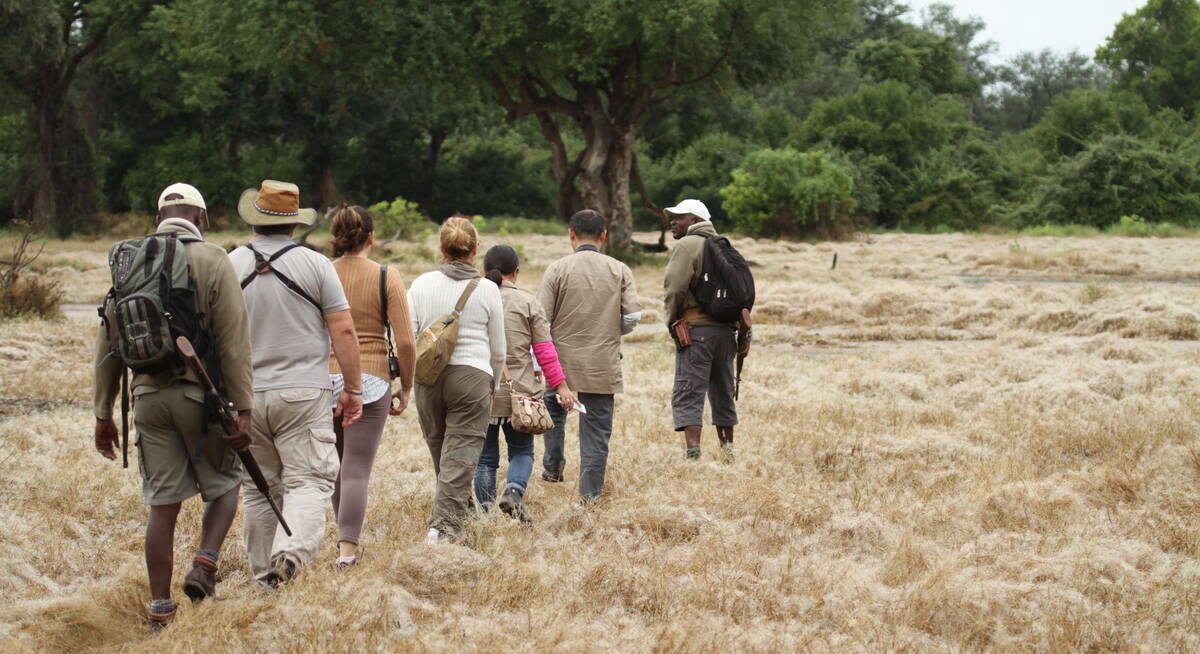
Buffalo Safari
9 days • 3 locations
HARARE AIRPORT TO VICTORIA FALLS AIRPORT
Combining Zimbabwe’s Mana Pools and Hwange national parks with stays at intimate six-tent safari camps offering excellent walking, canoeing and game drives. Superb wildlife viewing and a real wilderness-focused experience.
US$8,840 - US$11,910 per person
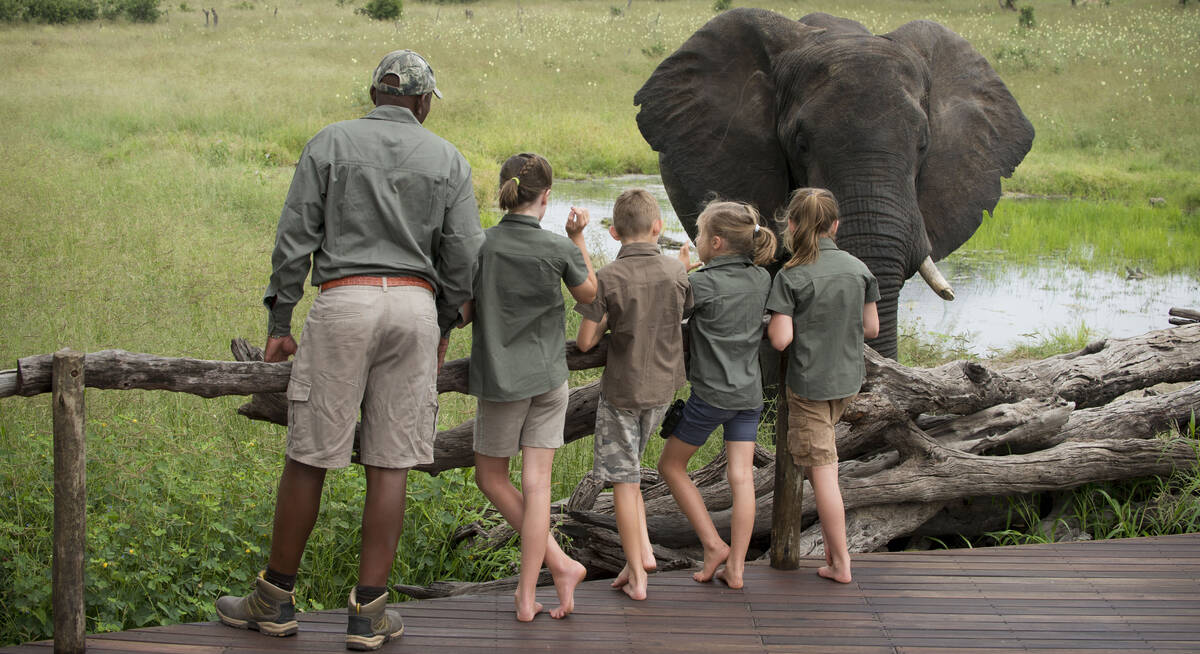
Pied Kingfisher Safari
9 days • 3 locations
VICTORIA FALLS AIRPORT TO HARARE AIRPORT
A luxury safari combining three of Zimbabwe's top highlights. The trip uses some of the finest safari camps in Zimbabwe and is perfect for a family or small group.
US$8,470 - US$11,860 per person
Most recent reviews of our safaris to Hwange
Click below to browse all 222 reviews from Hwange National Park. All from our travellers; all are in full & unedited.
Arrived 6 Apr 2025, 10 nights
"My Apr 2025 trip"
Overall rating: Excellent
Arrived 2 Mar 2025, 24 nights
"My Mar 2025 trip"
Overall rating: Excellent
Arrived 8 Jan 2025, 10 nights
"My Jan 2025 trip"
Overall rating: Excellent
Arrived 18 Dec 2024, 32 nights
"3-generation family tour"
Overall rating: Excellent
Arrived 4 Sep 2024, 14 nights
"My Sep 2024 trip"
Overall rating: Excellent
Arrived 31 Aug 2024, 13 nights
"My Aug 2024 trip to Zimbabwe"
Overall rating: Excellent
Arrived 27 Aug 2024, 13 nights
"My Aug 2024 trip"
Overall rating: Excellent
Arrived 3 Aug 2024, 13 nights
"Zimbabwe Aug 2024 trip"
Overall rating: Good
Arrived 25 Jul 2024, 11 nights
"My Jul 2024 trip"
Overall rating: Excellent
Arrived 21 Jun 2024, 13 nights
"My Jun 2024 trip"
Overall rating: Excellent
The best camps & lodges in Hwange National Park
Hwange National Park is a large national park with a diverse range of safari camps and lodges. From the small and very personal experience at Hwange Bush Camp to the smart, luxurious Somalisa and Linkwasha Camp, all are immersed in the wild. Expect close encounters with elephants at waterholes, expertly-guided bush walks and thrilling game drives.
See the lodges and camps below, then talk to our Zimbabwe experts who know them all well – and will guide you to a safari to suit you.
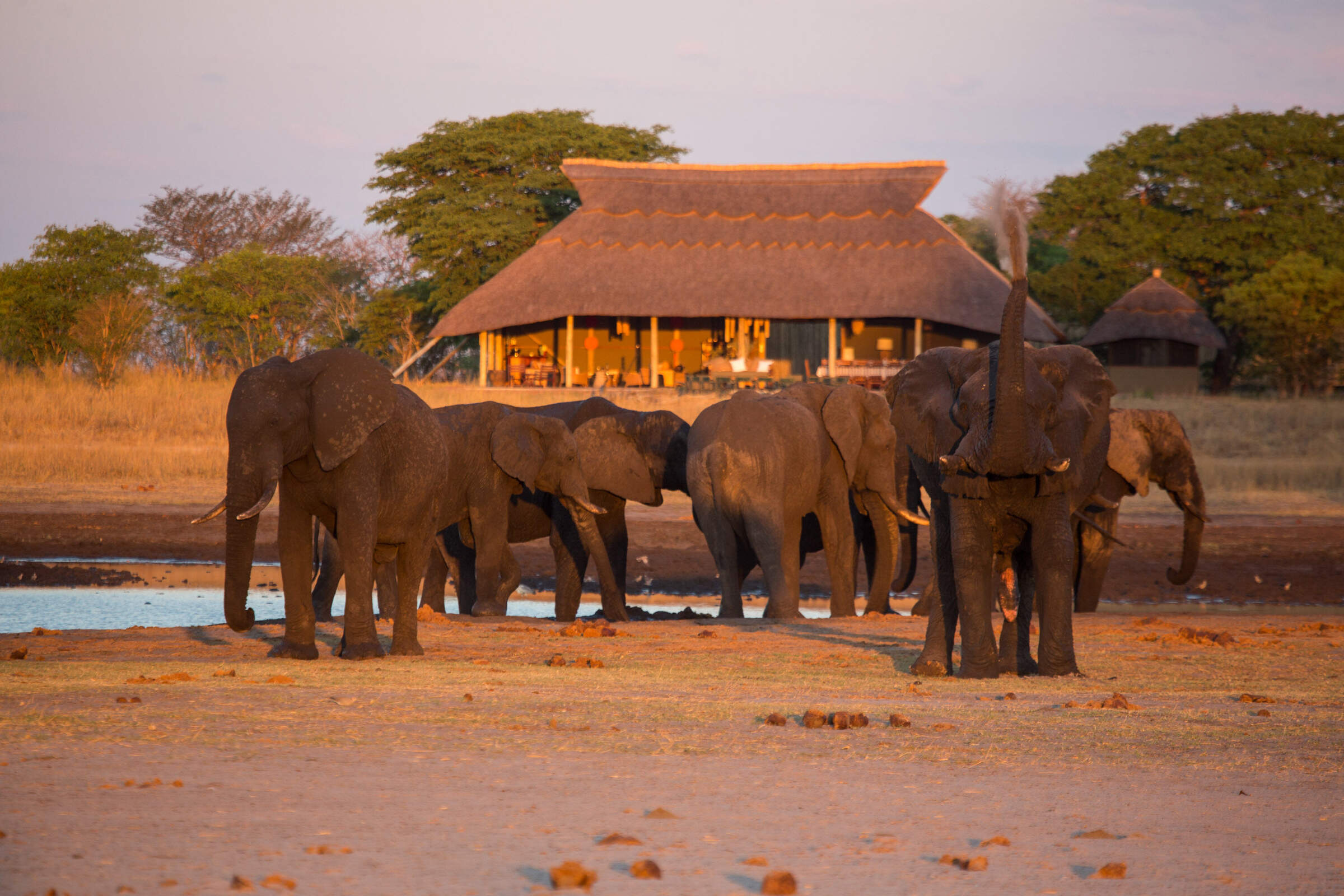
Camp Hwange
Overlooking a waterhole in a remote part of Hwange National Park, Camp Hwange offers great guiding in a pristine wilderness at reasonable prices.
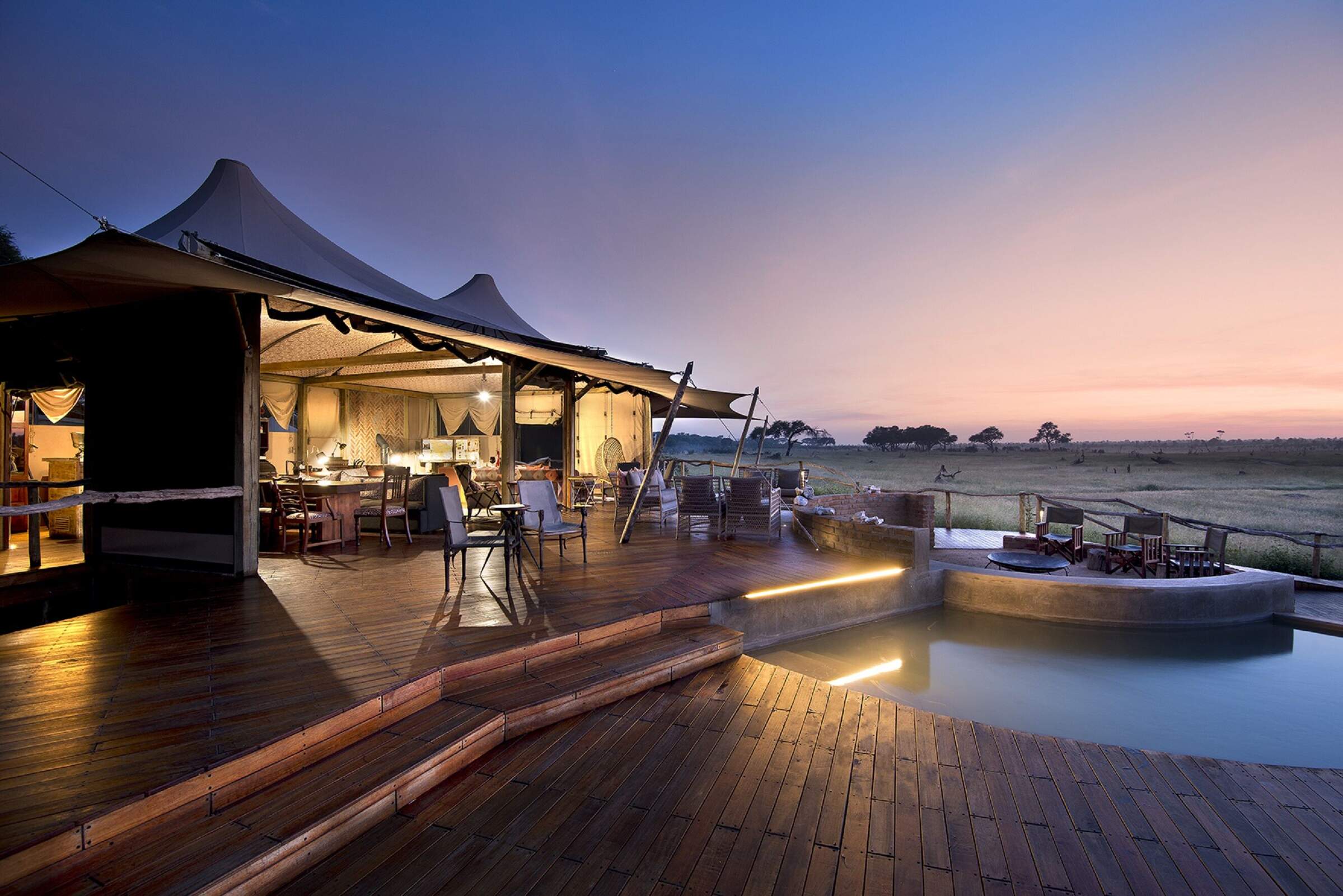
Somalisa Camp
Somalisa is a luxurious, yet remote, safari camp in Hwange National Park, offering walking safaris and game drives.
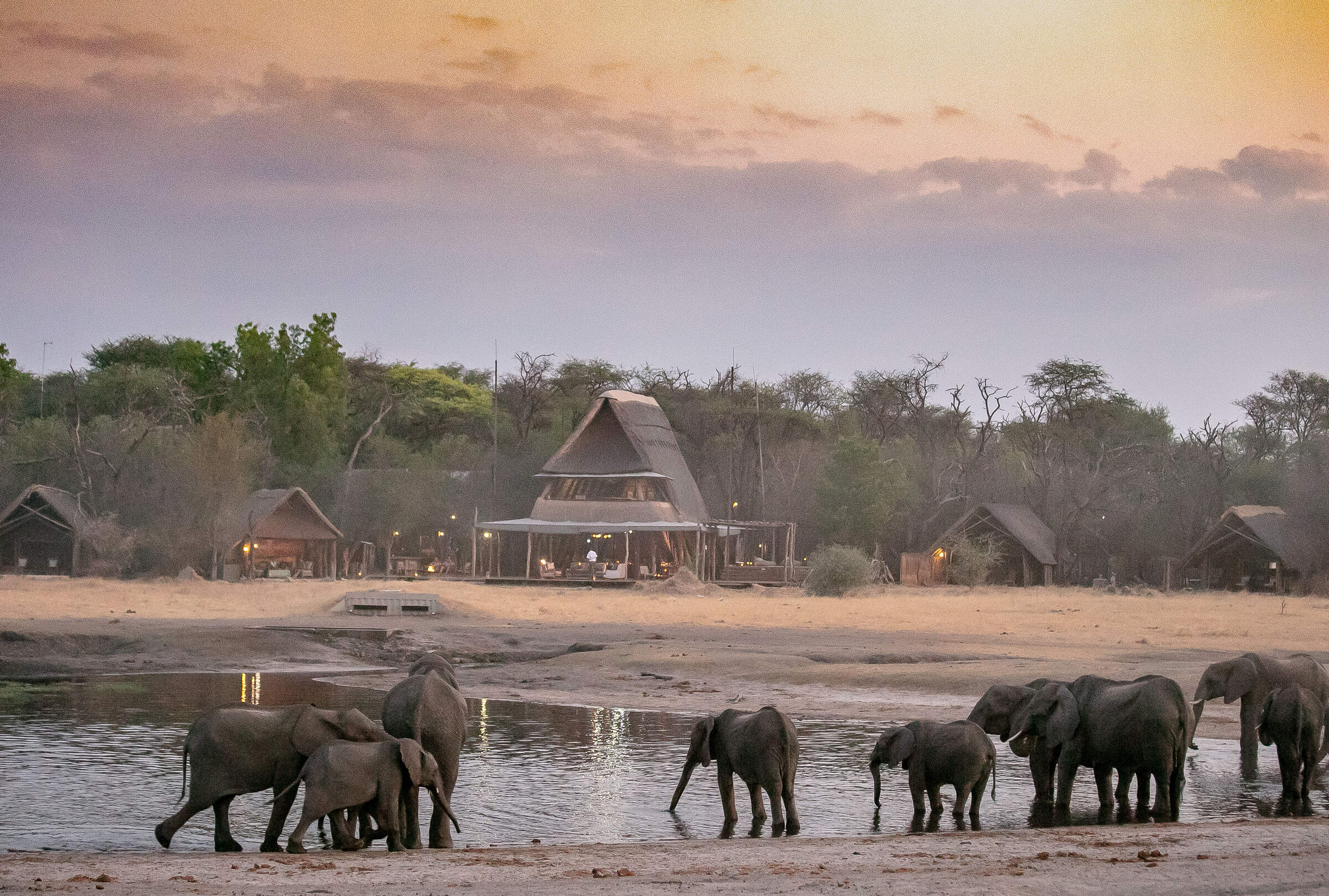
The Hide
Located in a small, private concession, The Hide is a relaxed and comfortable camp offering submerged hides and great family accommodation.
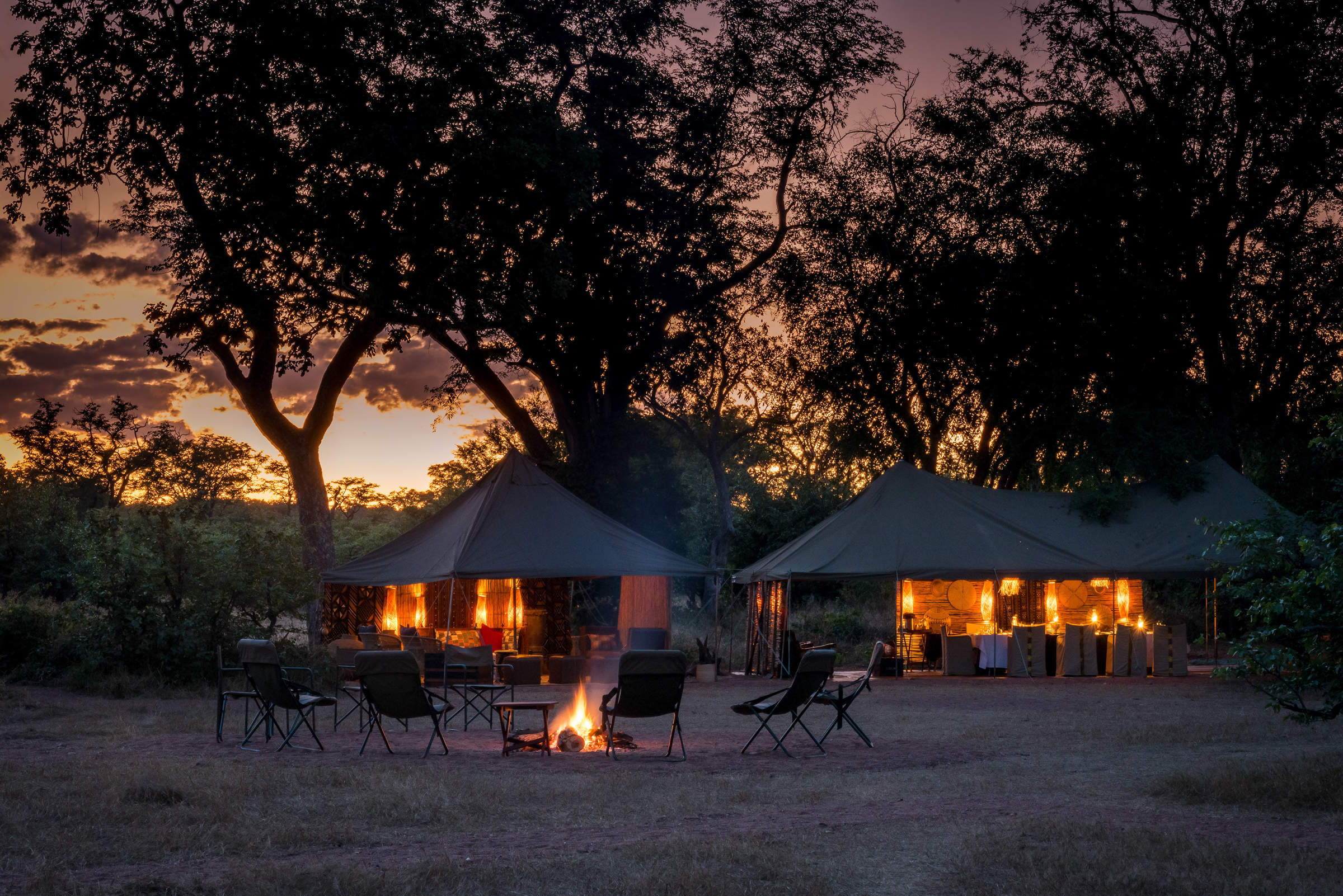
Hwange Bush Camp
Hwange Bush Camp is a small seasonal camp offering comfortable tents, great food, and superb guiding, and is often used by exclusive groups.
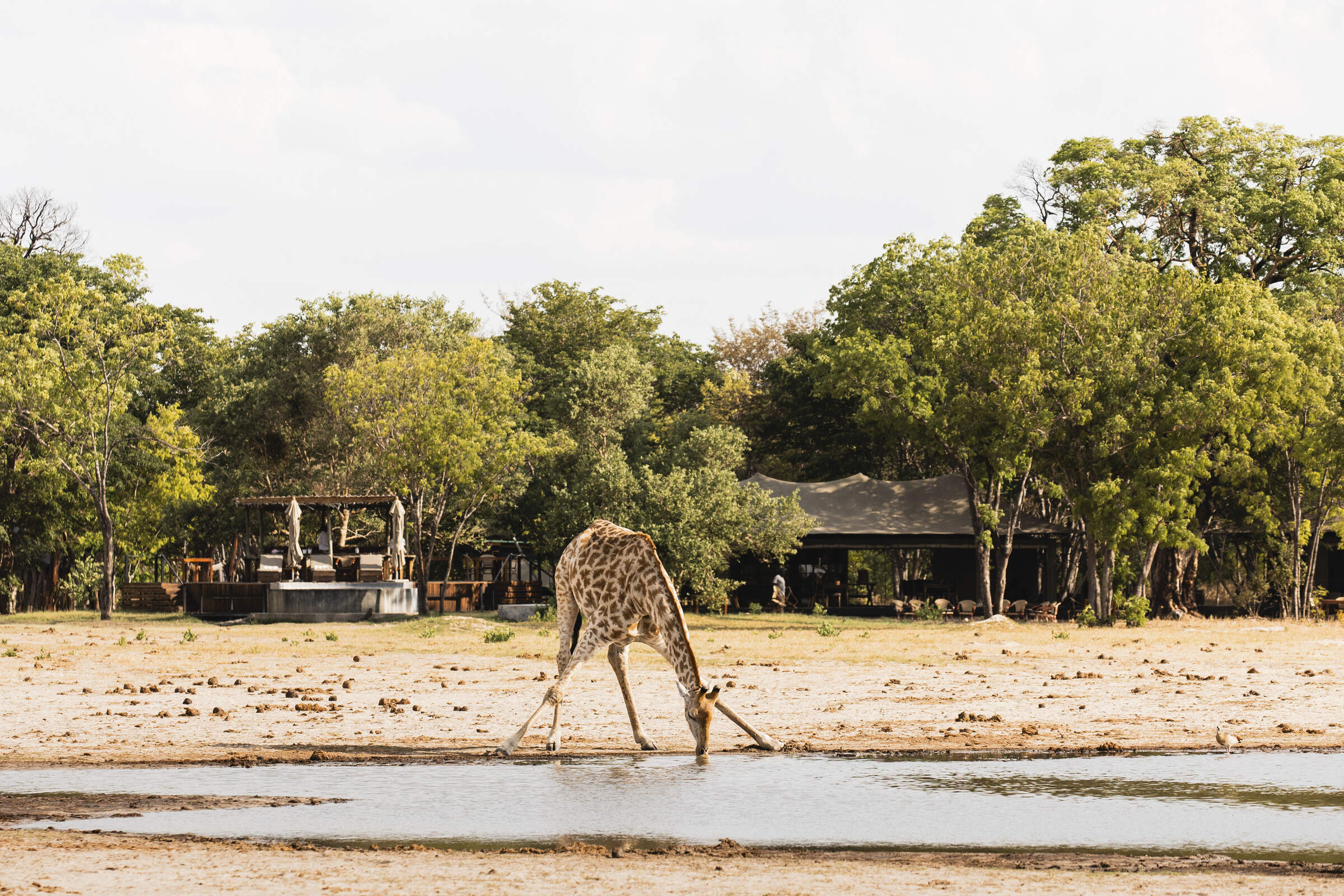
Little Makalolo Camp
Tucked away in Hwange National Park overlooking a waterhole, Little Makalolo Camp combines top guiding with excellent wildlife watching.
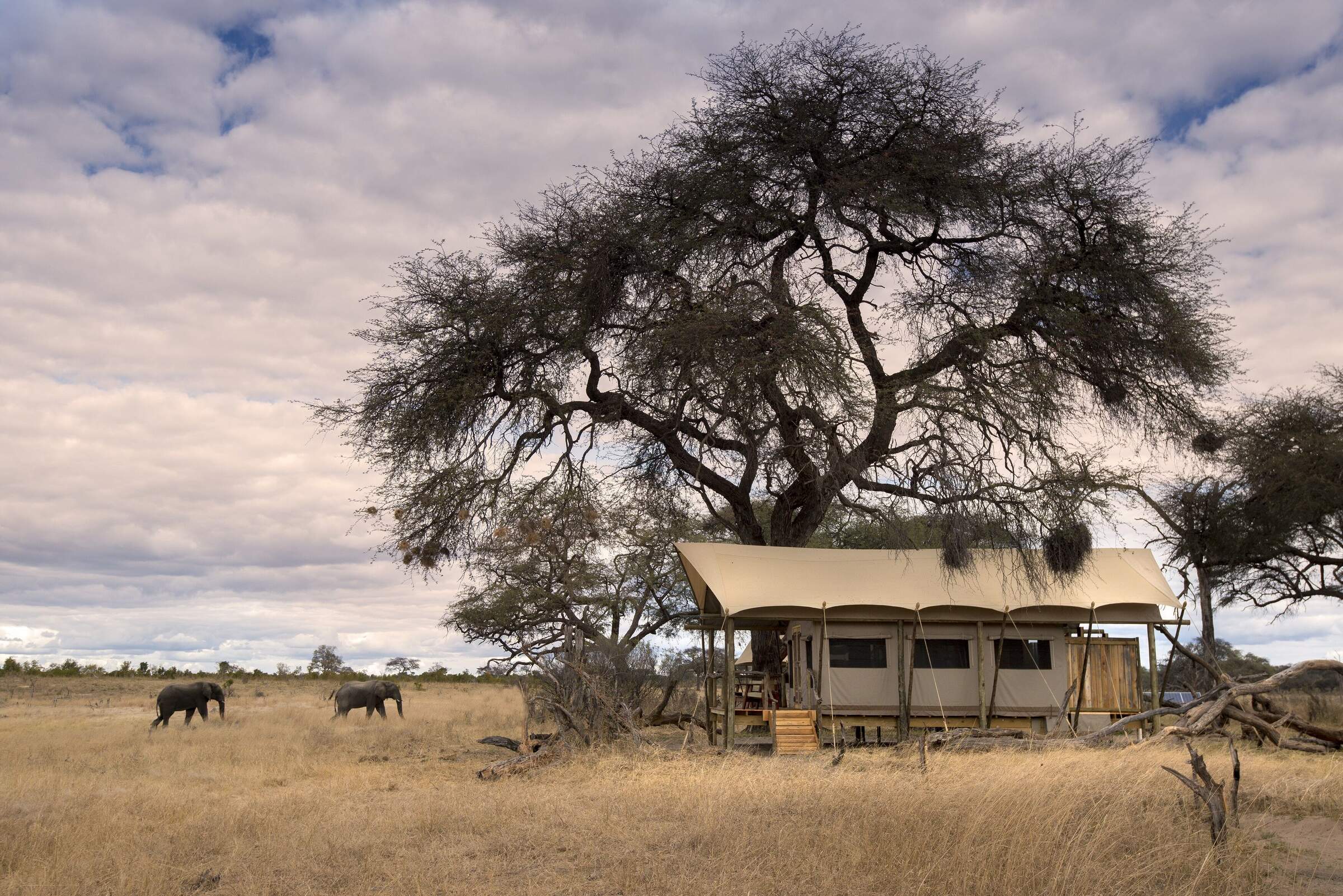
Somalisa Expeditions
A simple but stylish camp, Somalisa Expeditions sits in the heart of Hwange National Park, offering walking safaris and game drives.
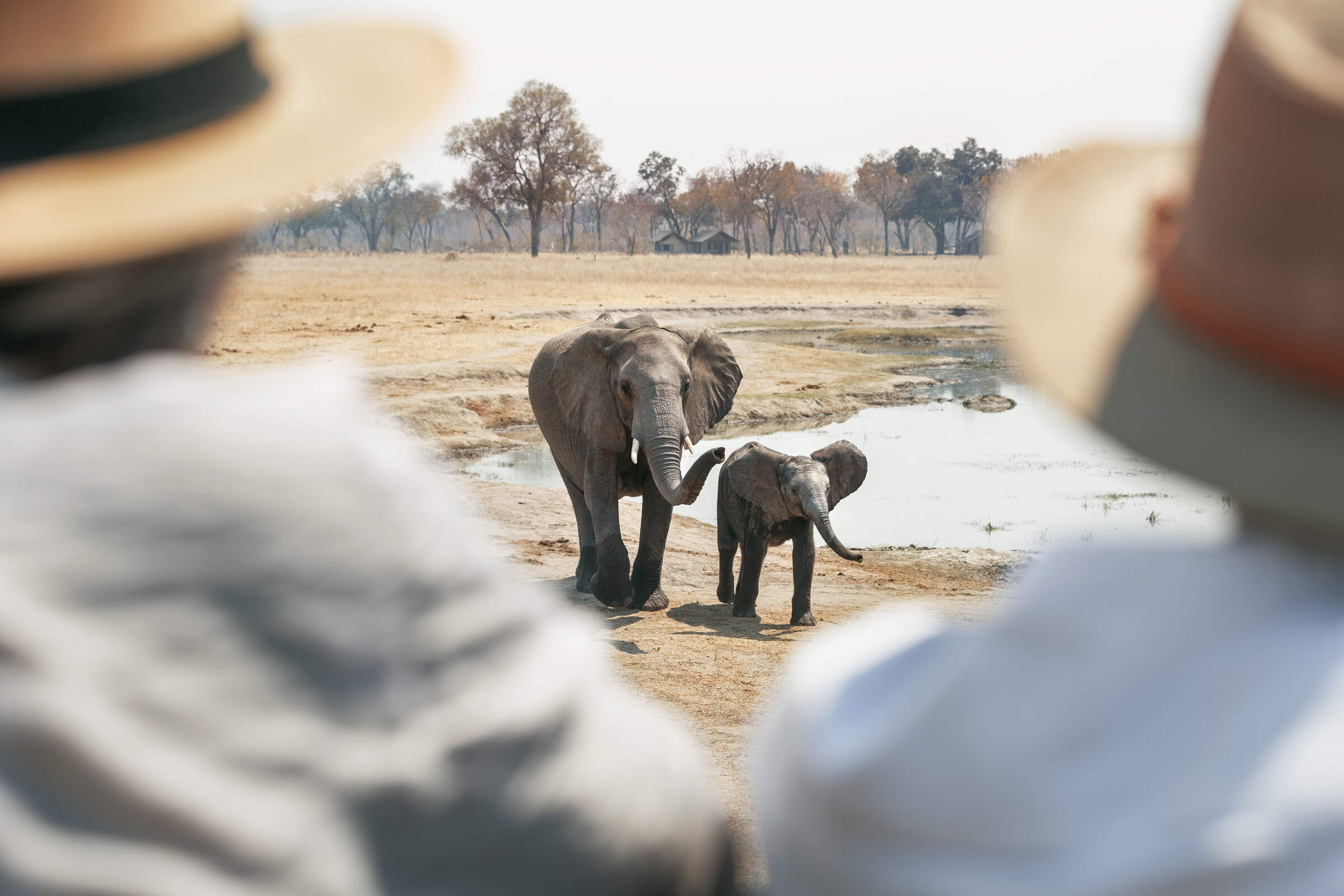
Davison's Camp
Within the Linkwasha Concession, Davison's Camp offers superb value for money, morning walking safaris and spot-lit drives after dark.
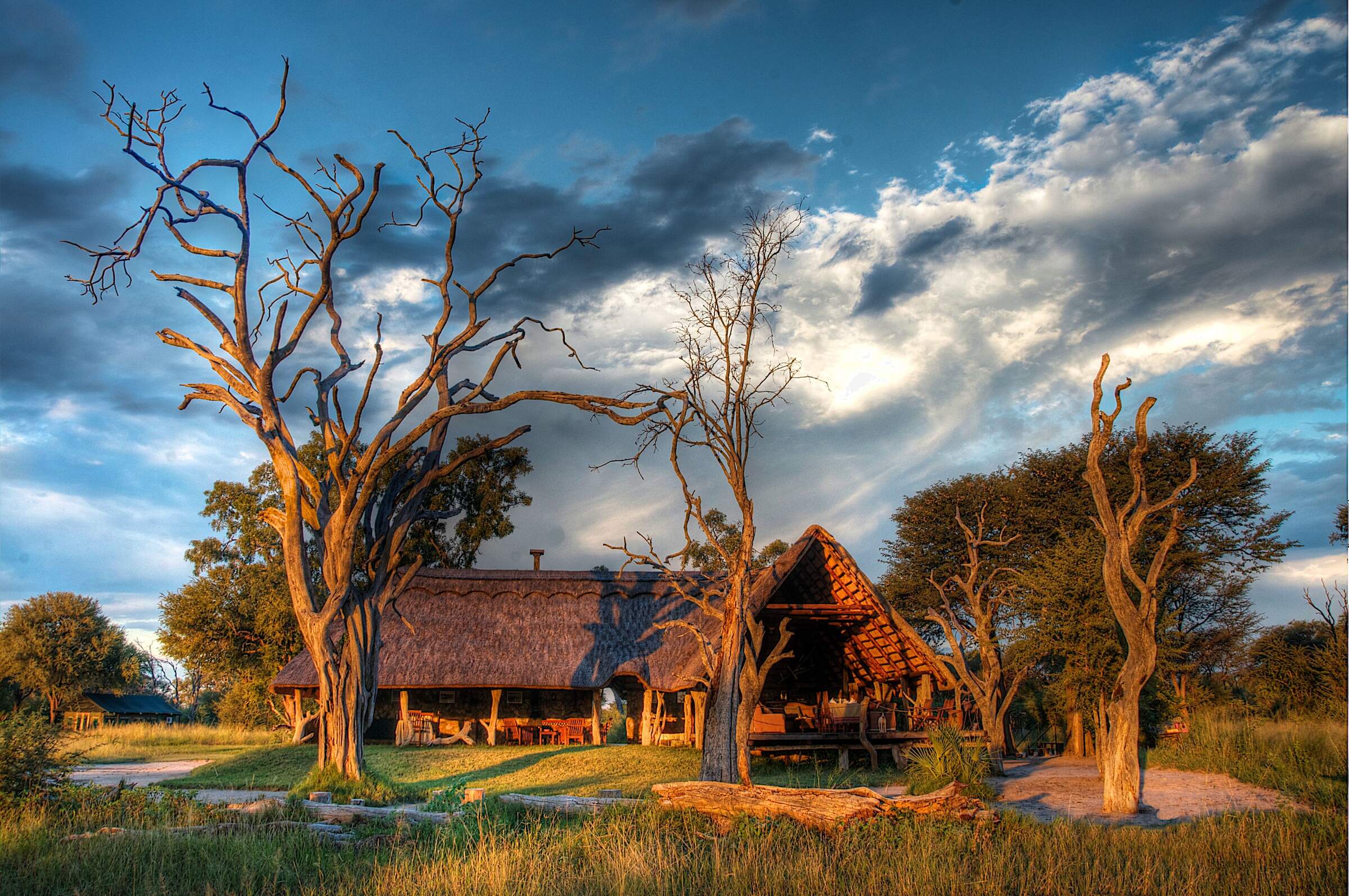
Bomani Tented Lodge
Bomani is a down-to-earth lodge with a range of activities in a remote region of western Zimbabwe, adjacent to Hwange National Park.
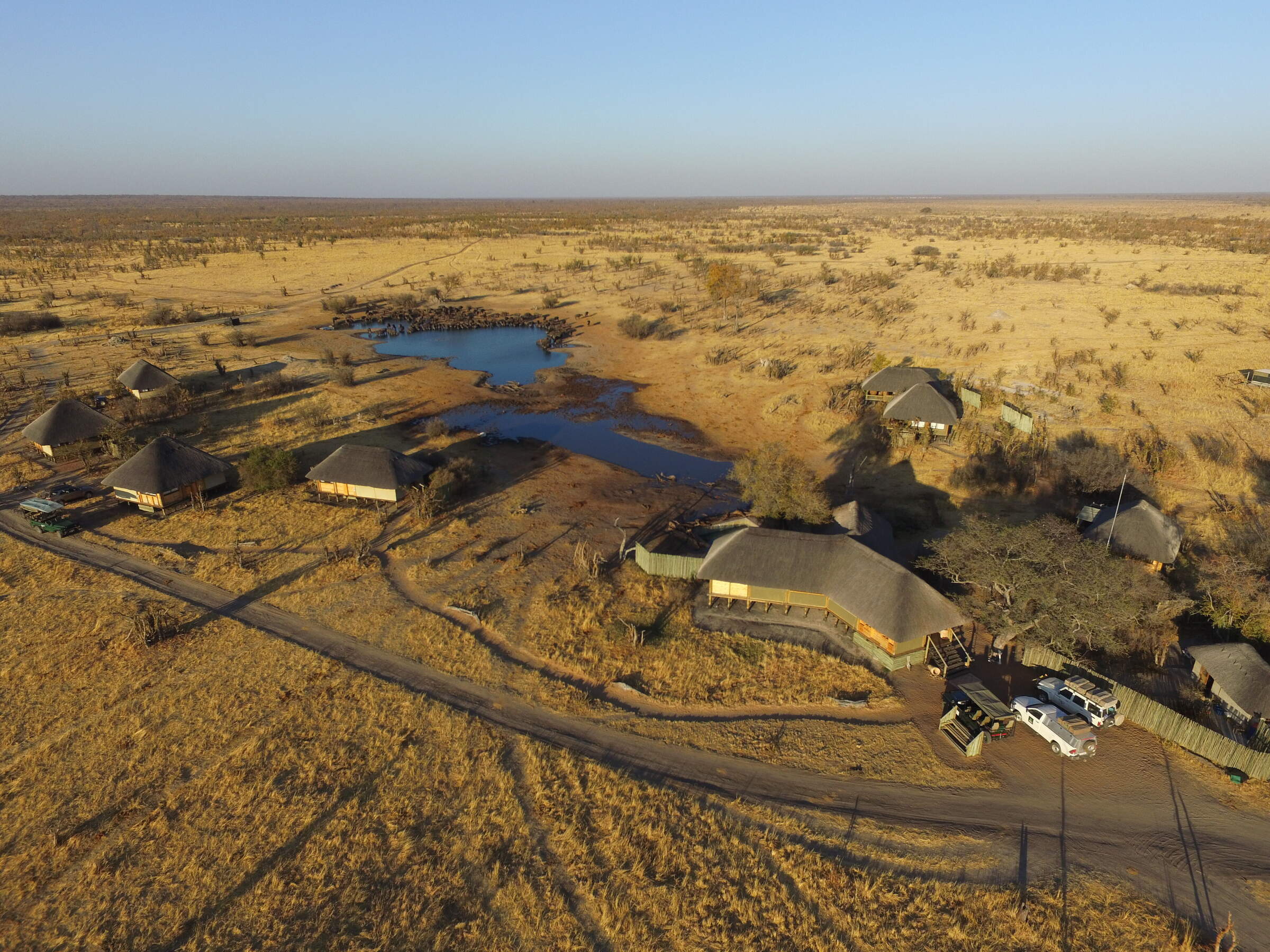
Nehimba Lodge
Nehimba is a comfortable, good-value camp in a remote area of Hwange National Park, teeming with wildlife.
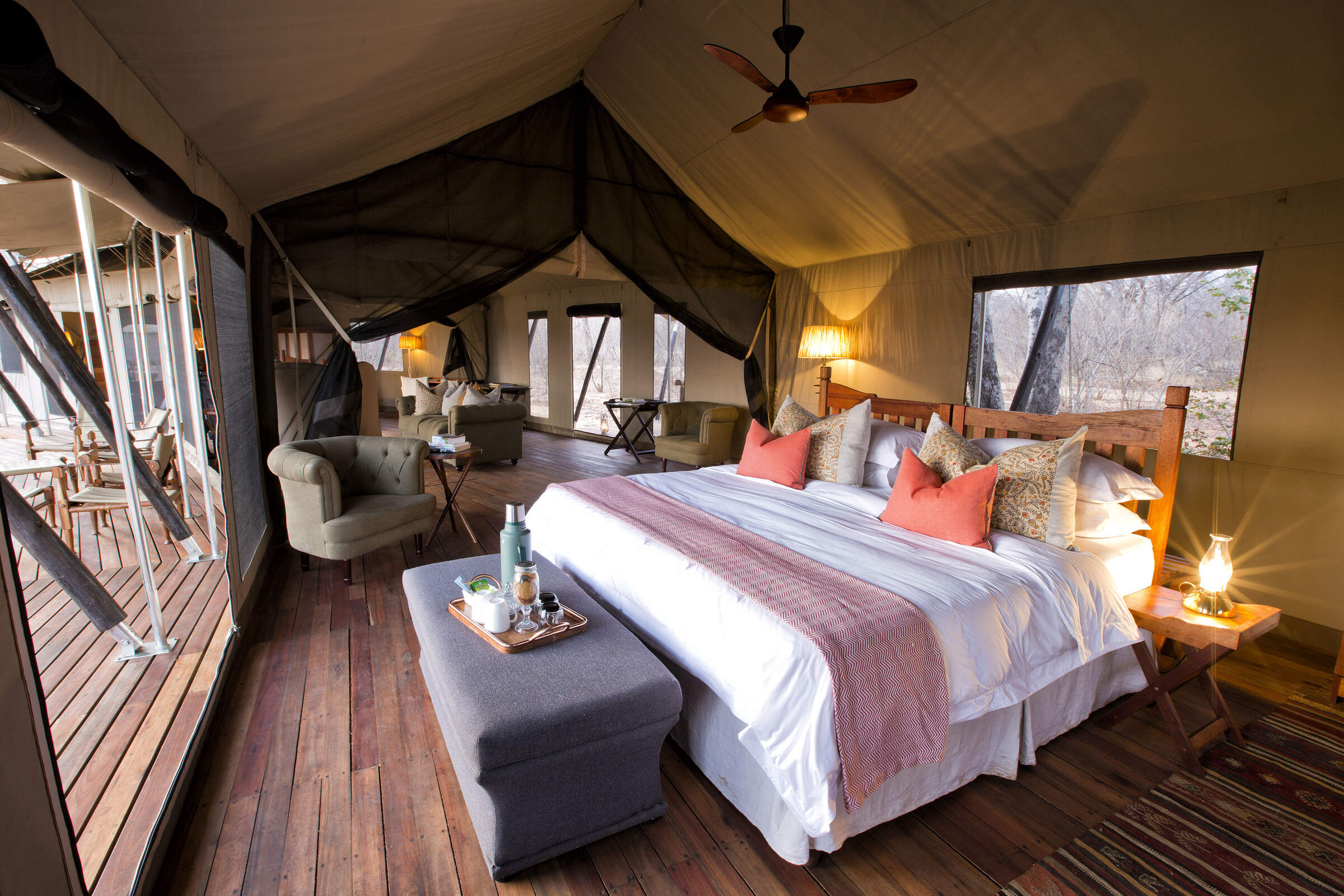
Verney's Camp
Verney's Camp is one of the newest offerings in Hwange, located in the wildlife rich, open landscape in the south-eastern section of the park.
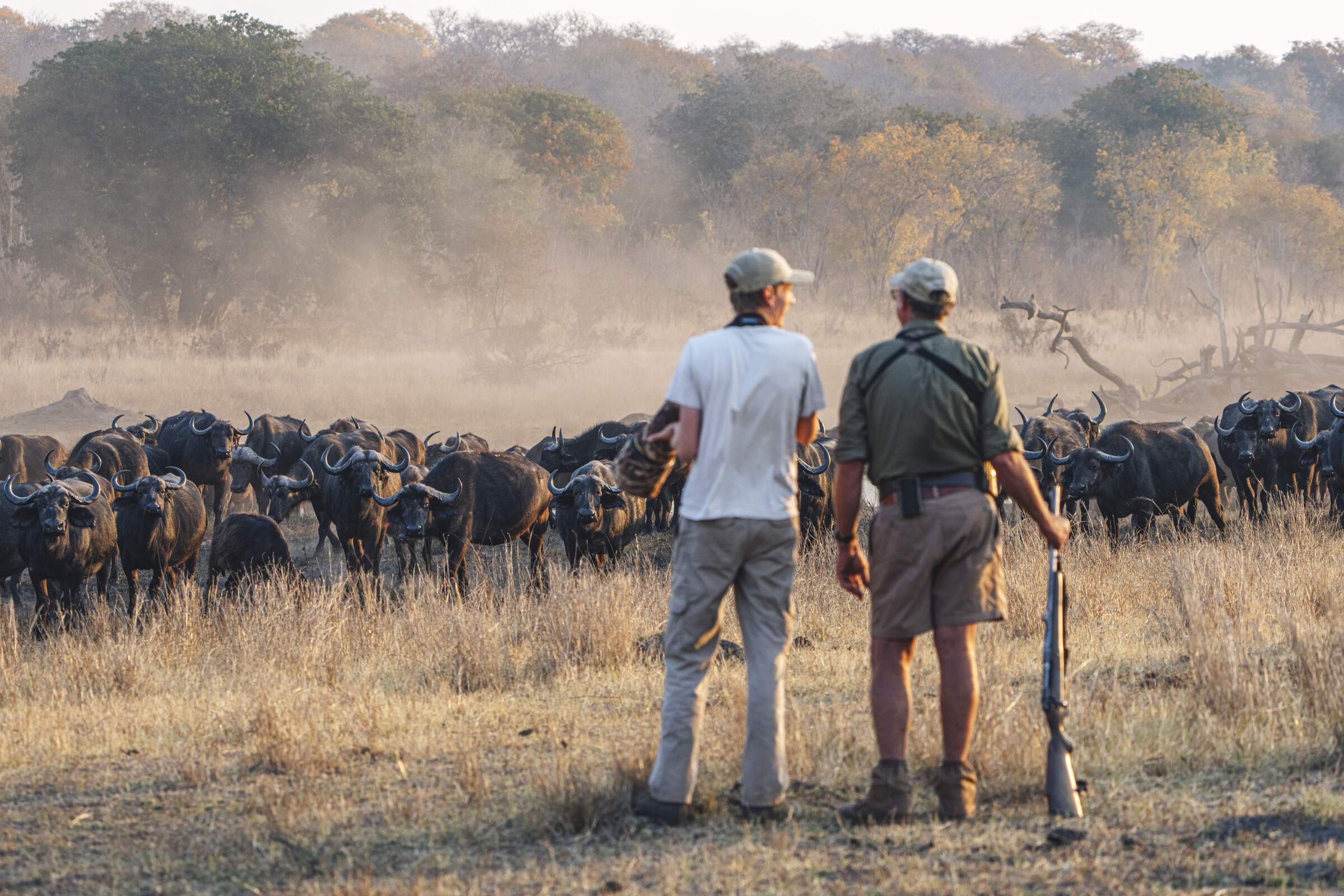
Khulu Bush Camp
Just outside Hwange National Park, Khulu Bush Camp features a waterhole popular with wildlife, especially elephants and offers excellent value for money.
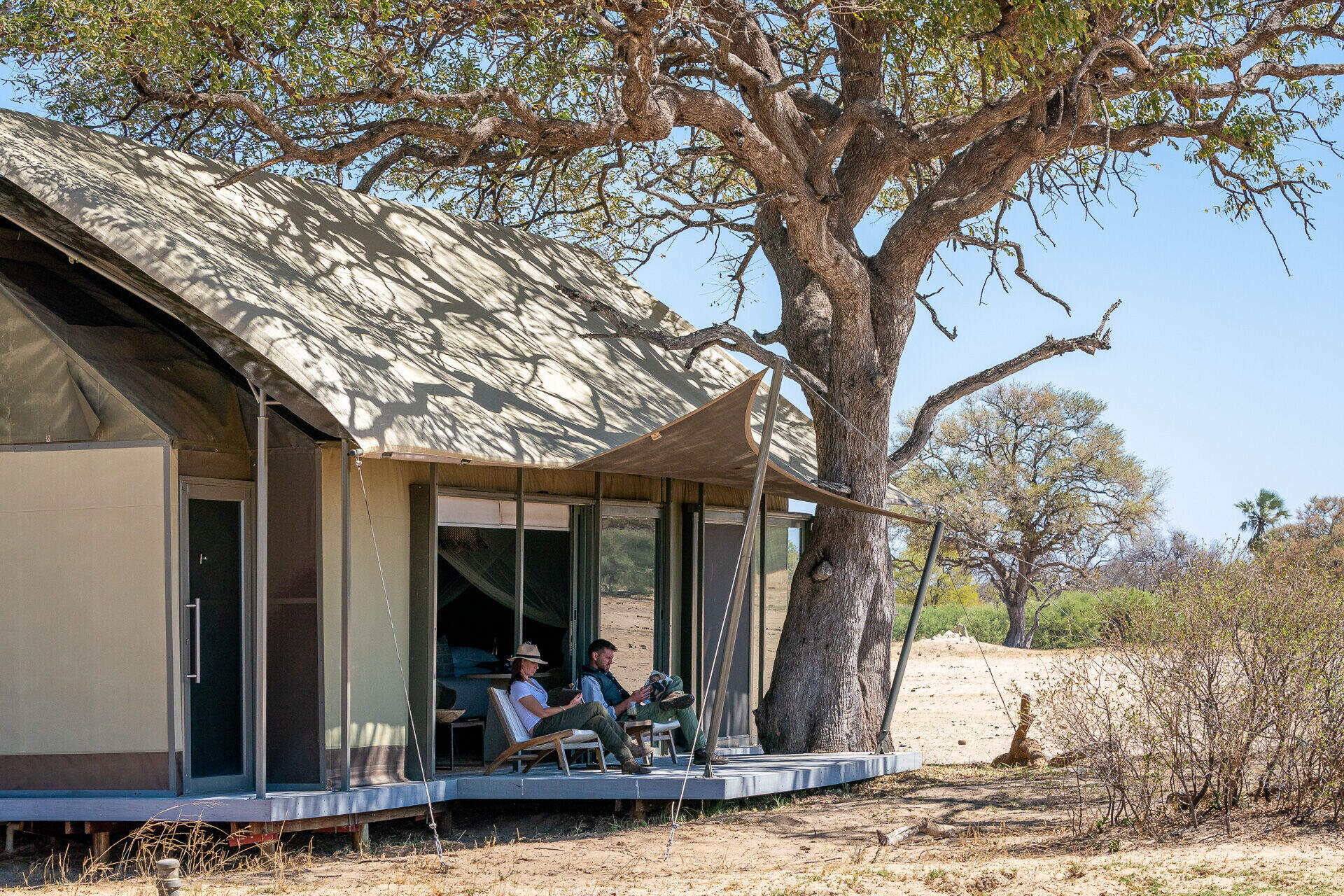
Linkwasha Camp
In its own private concession within Hwange National Park, Linkwasha offers excellent wildlife sightings and luxurious surroundings.
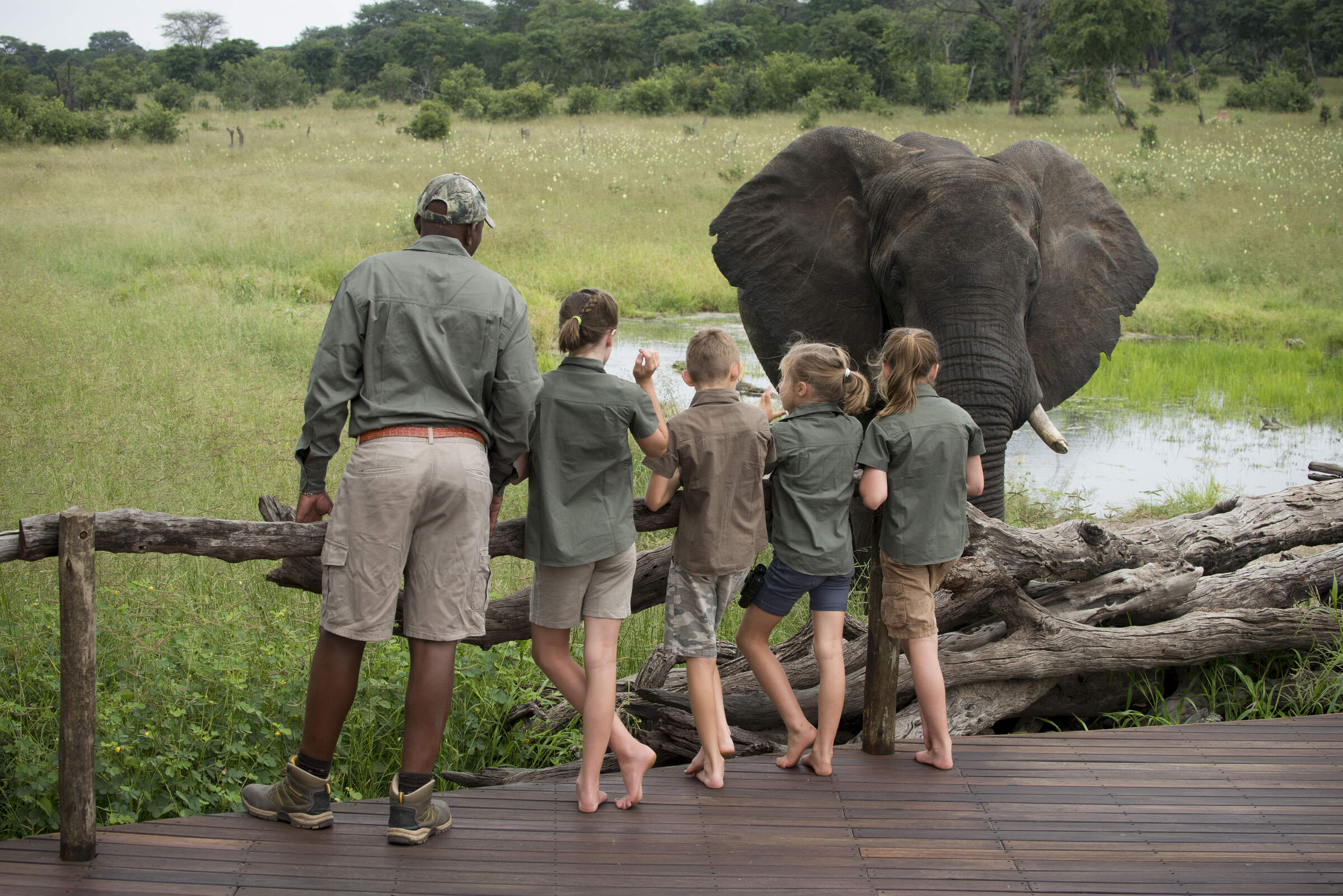
Somalisa Acacia
Somalisa Acacia is a family-friendly, yet remote and luxurious safari camp in Hwange National Park.
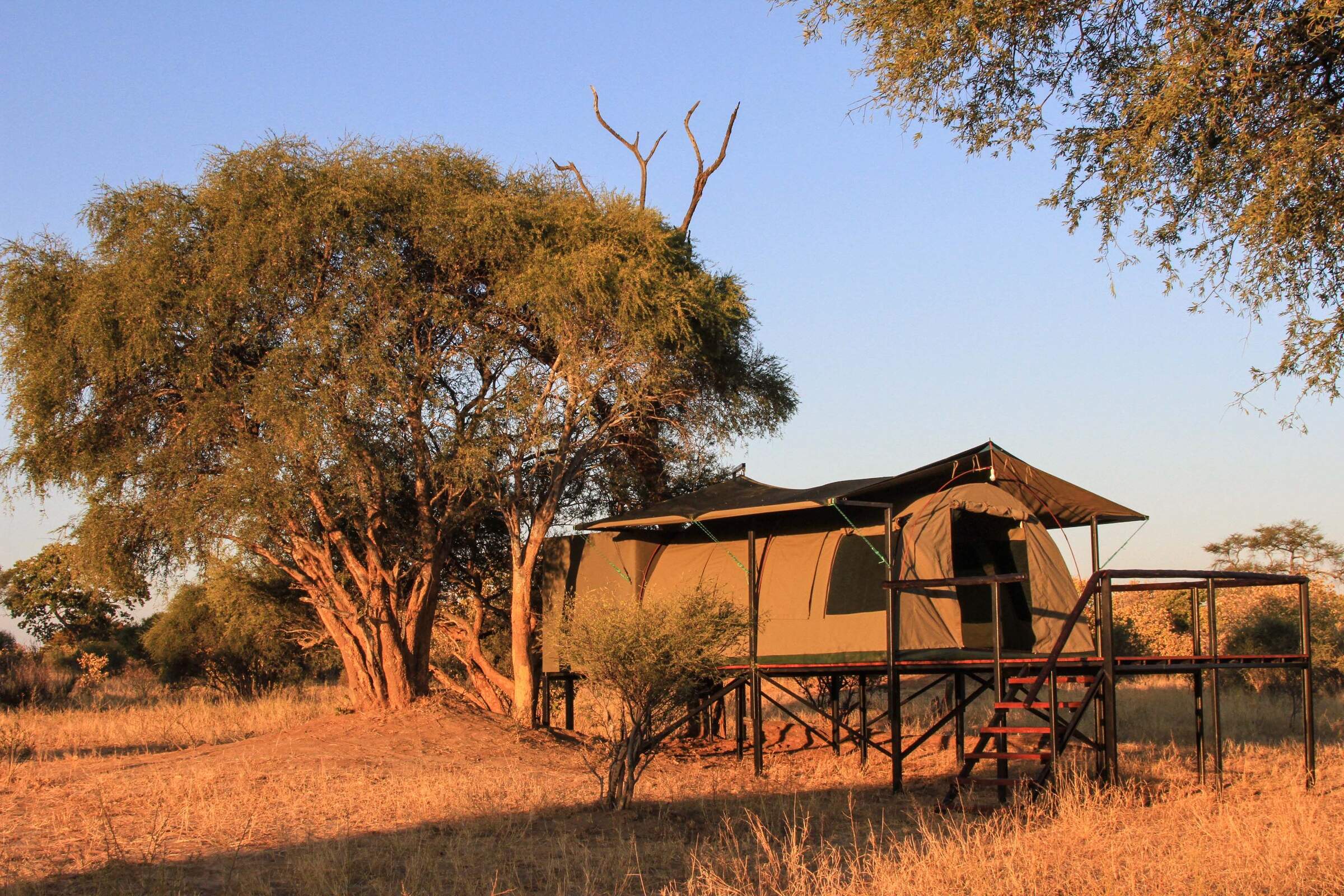
Jozibanini Camp
Remote and rugged, Jozibanini is one of the most remote camps in Zimabwe's largest National Park. Stay here for a real wilderness experience.
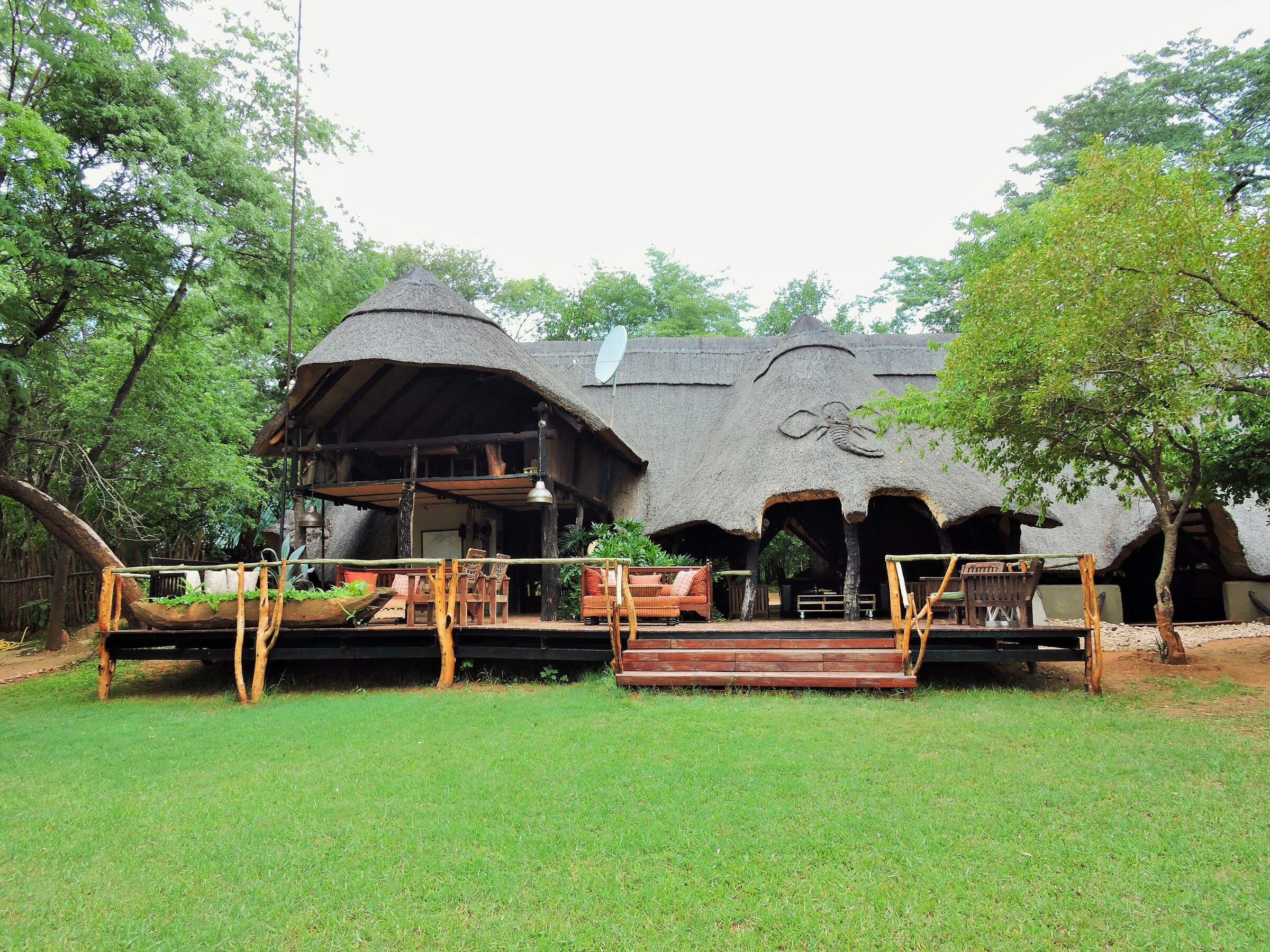
Ivory Lodge
Just outside Hwange National Park, the small Ivory Lodge is a great place to see large herds of elephant as well as smaller plains game.
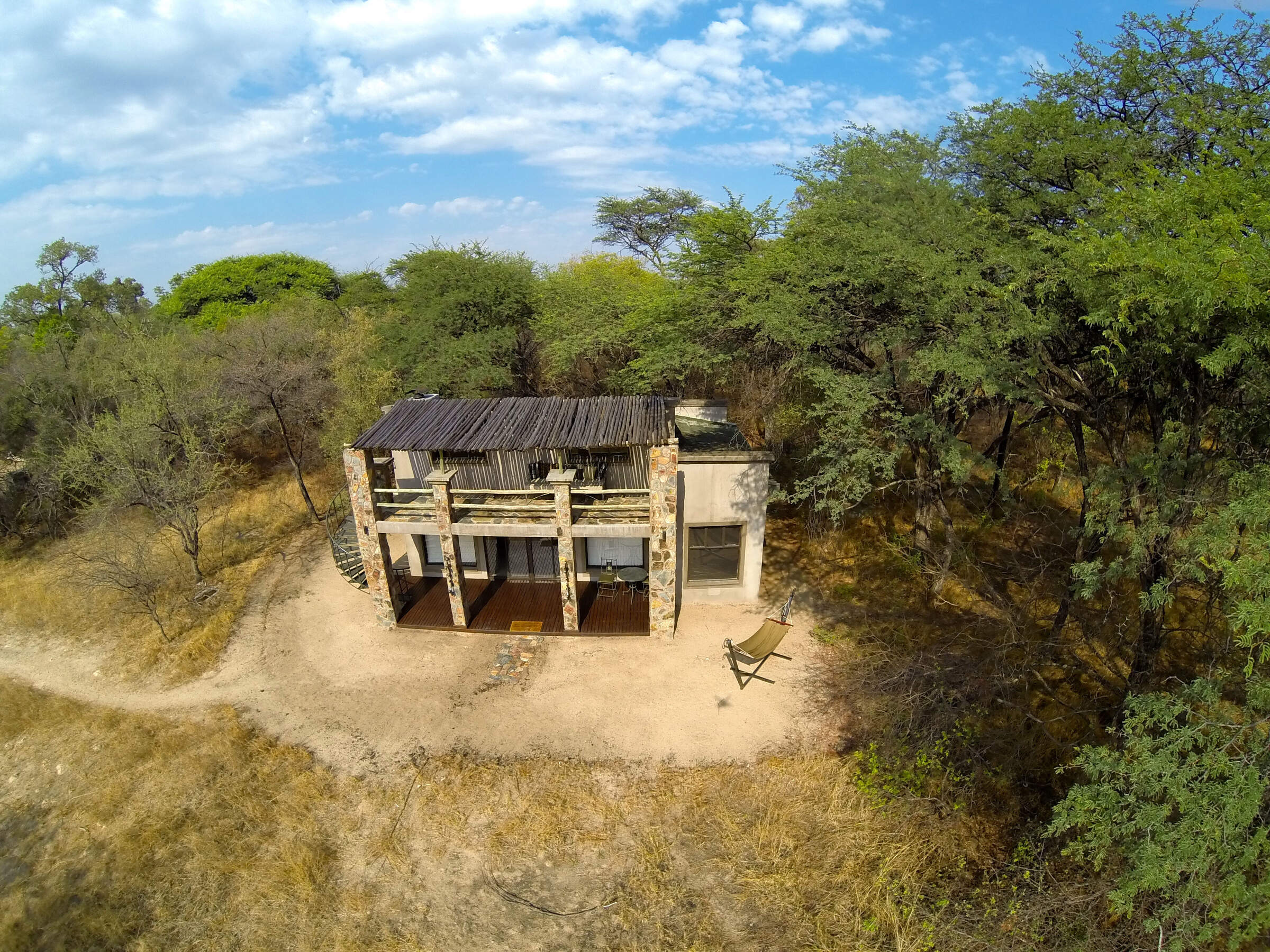
Camelthorn
Camelthorn is a stylish lodge with a range of activities in a remote region of western Zimbabwe, adjacent to Hwange National Park.
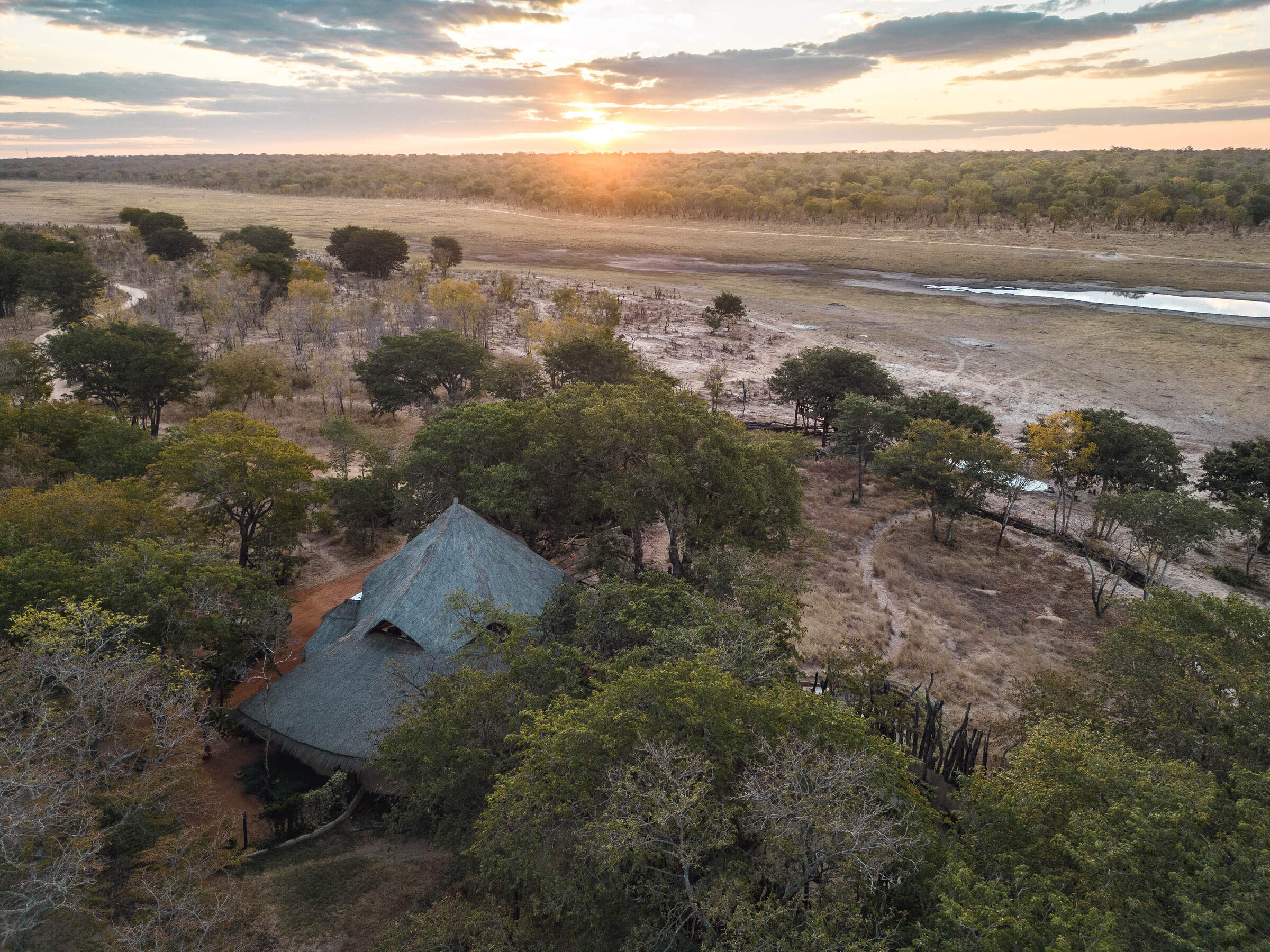
Sable Valley Lodge
Set on the 12km Dete Vlei, the recently upgraded and family-friendly Sable Valley sits in a private reserve within easy reach of Hwange National Park.
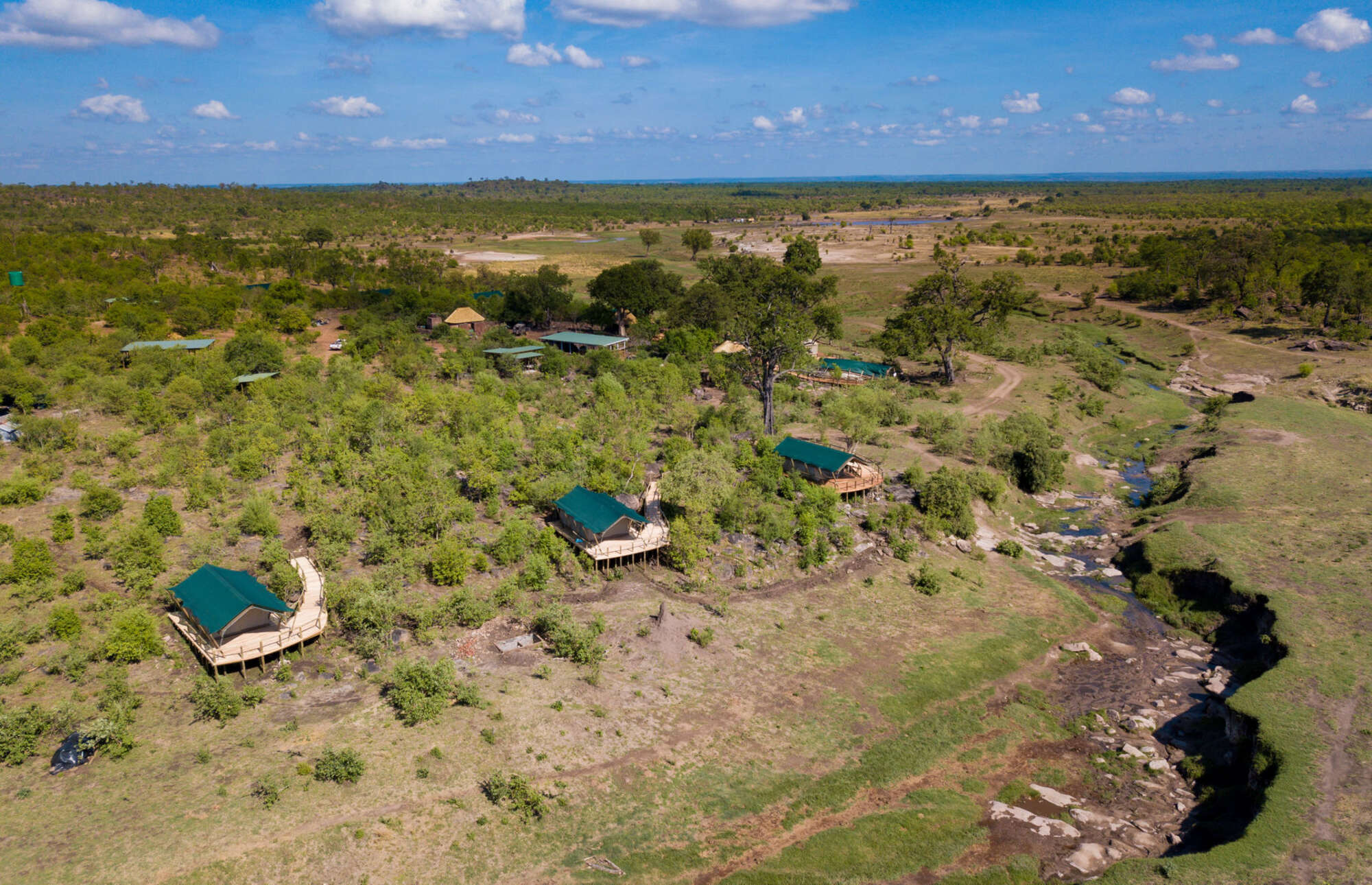
Deteema Springs Camp
Nestled deep in Hwange National Parks rugged northern sector, Deteema Springs Camp promises visitors an authentic bush camp experience.
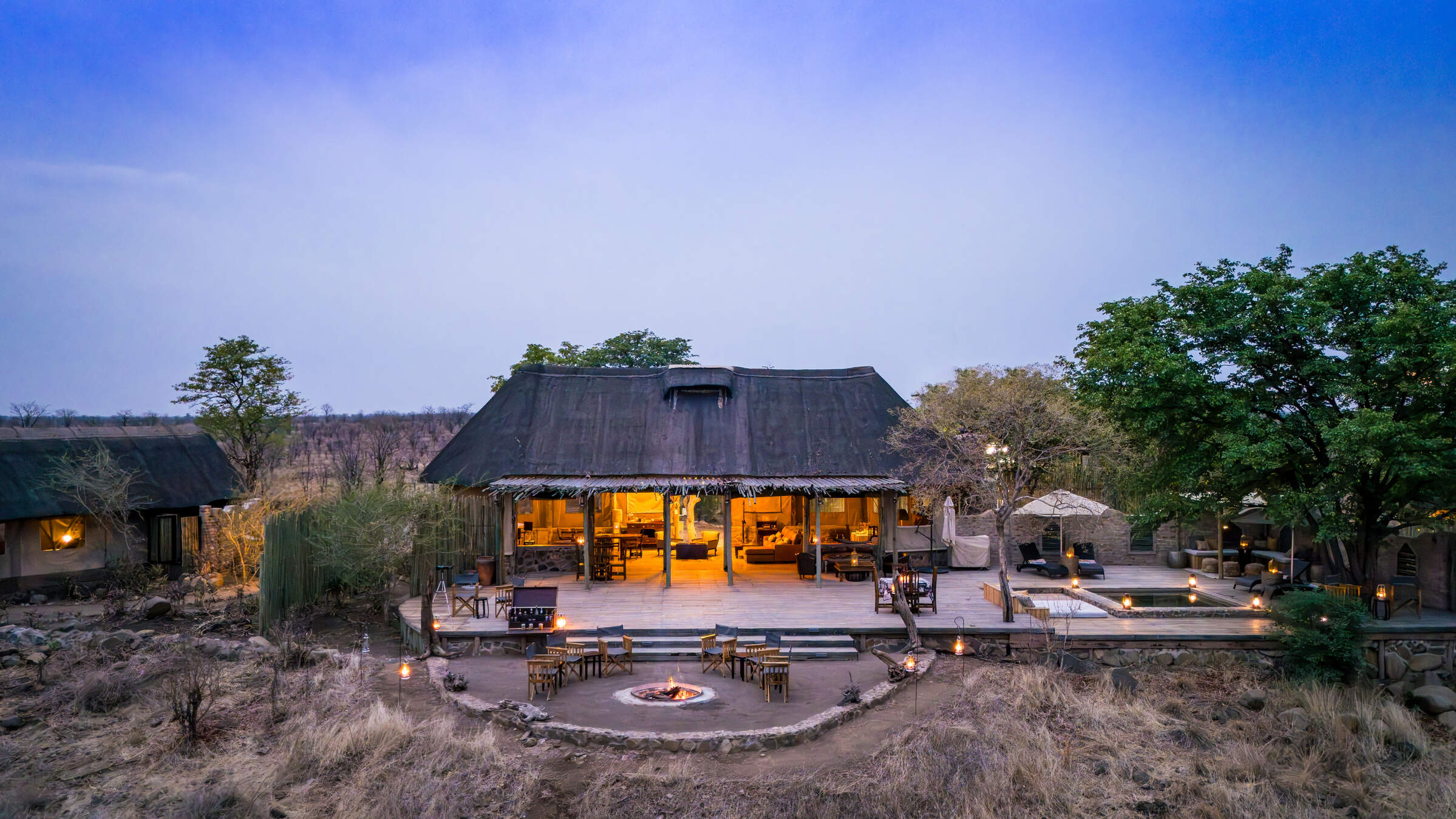
Daka Camp
One of the most remote camps in Hwange National Park, Daka Camp, like the smaller Daka Expeditions, sits almost on the border with Botswana.
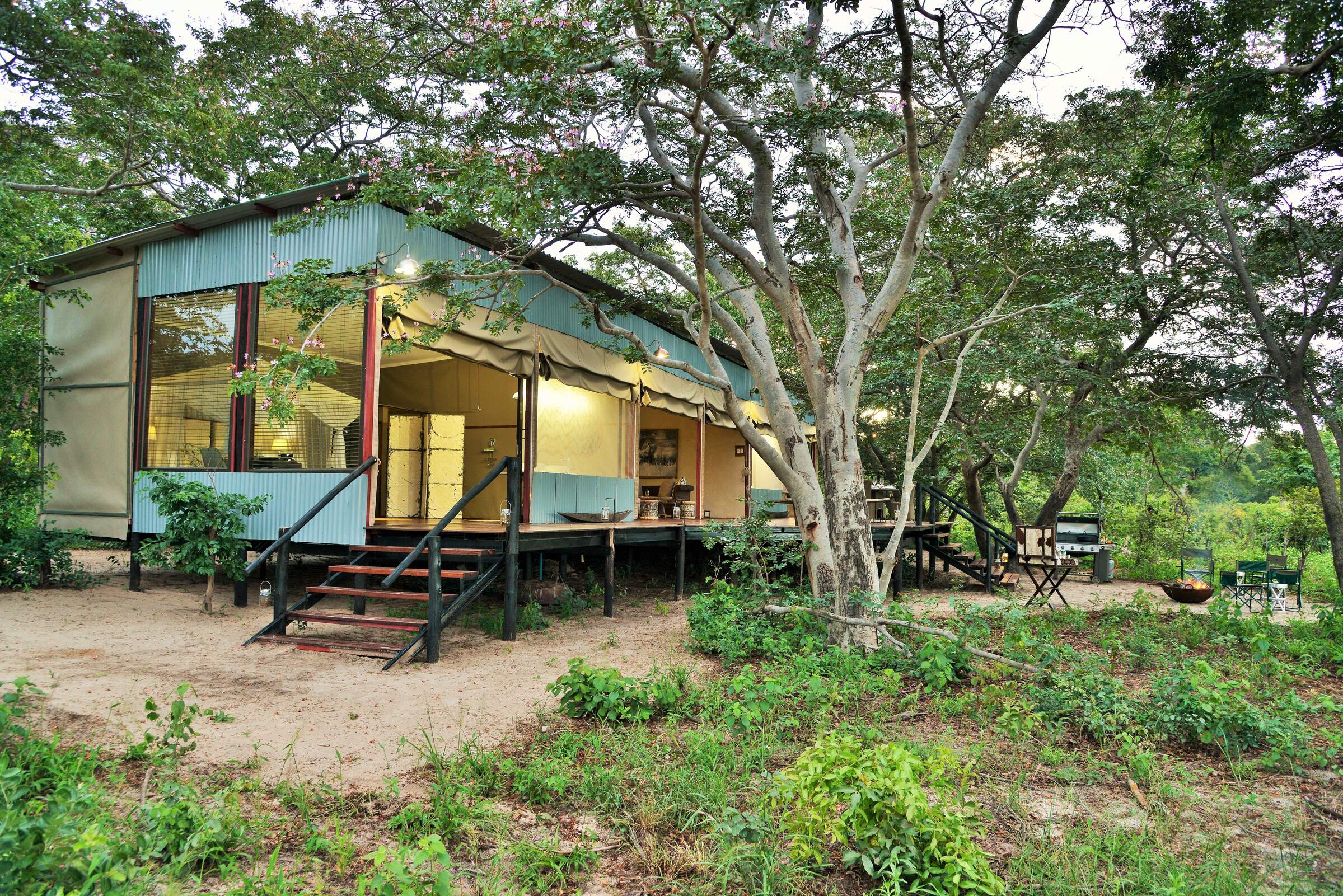
Khulu's Retreat
Just outside Hwange National Park, Khulu's Retreat is an exclusive private villa and is a great place to spoil yourself on a safari in Zimbabwe.
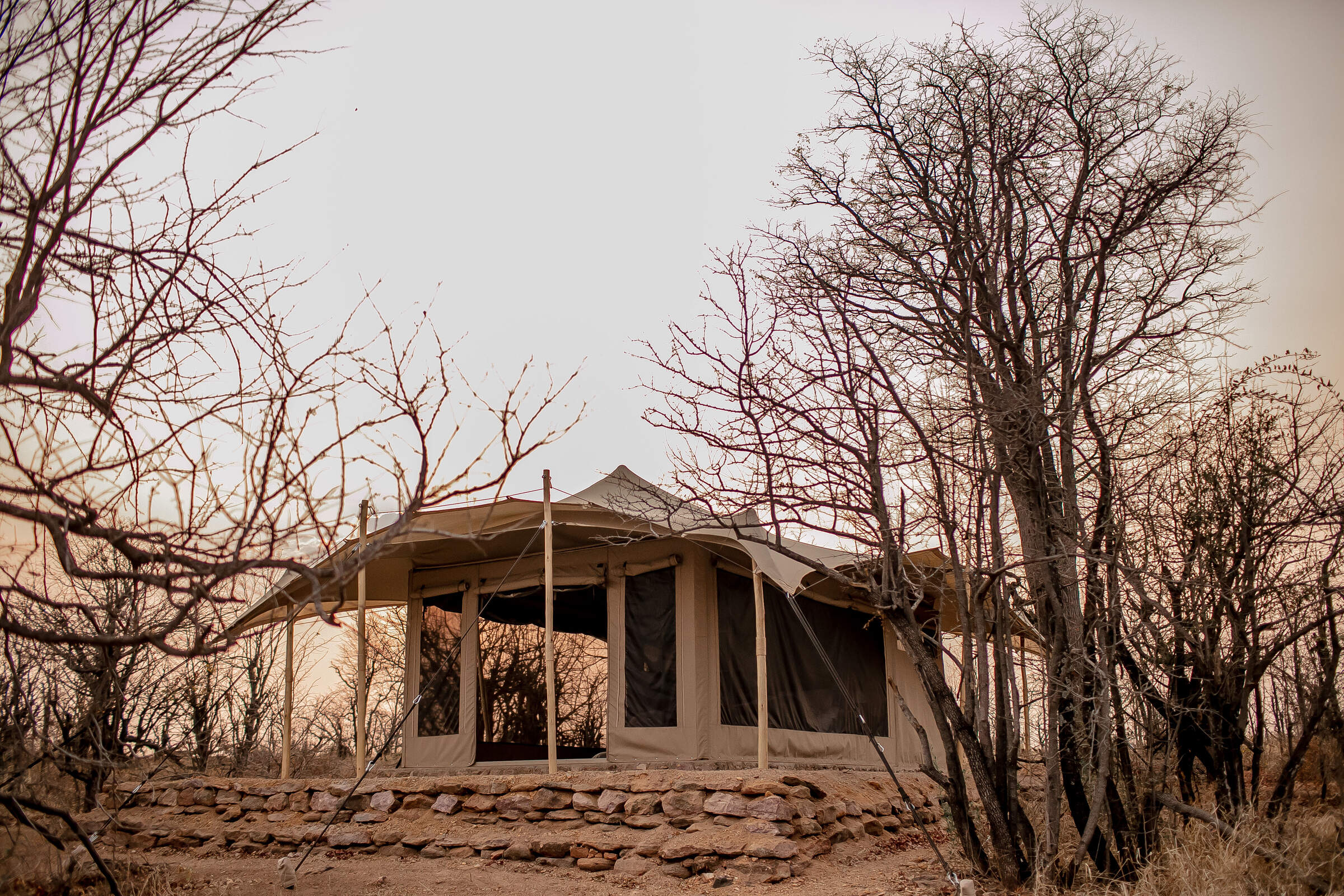
Camp Chitubu
Nestled in the rugged north of Hwange National Park, the unpretentious yet comfortable Camp Chitubu has a strong focus on excellent guiding.
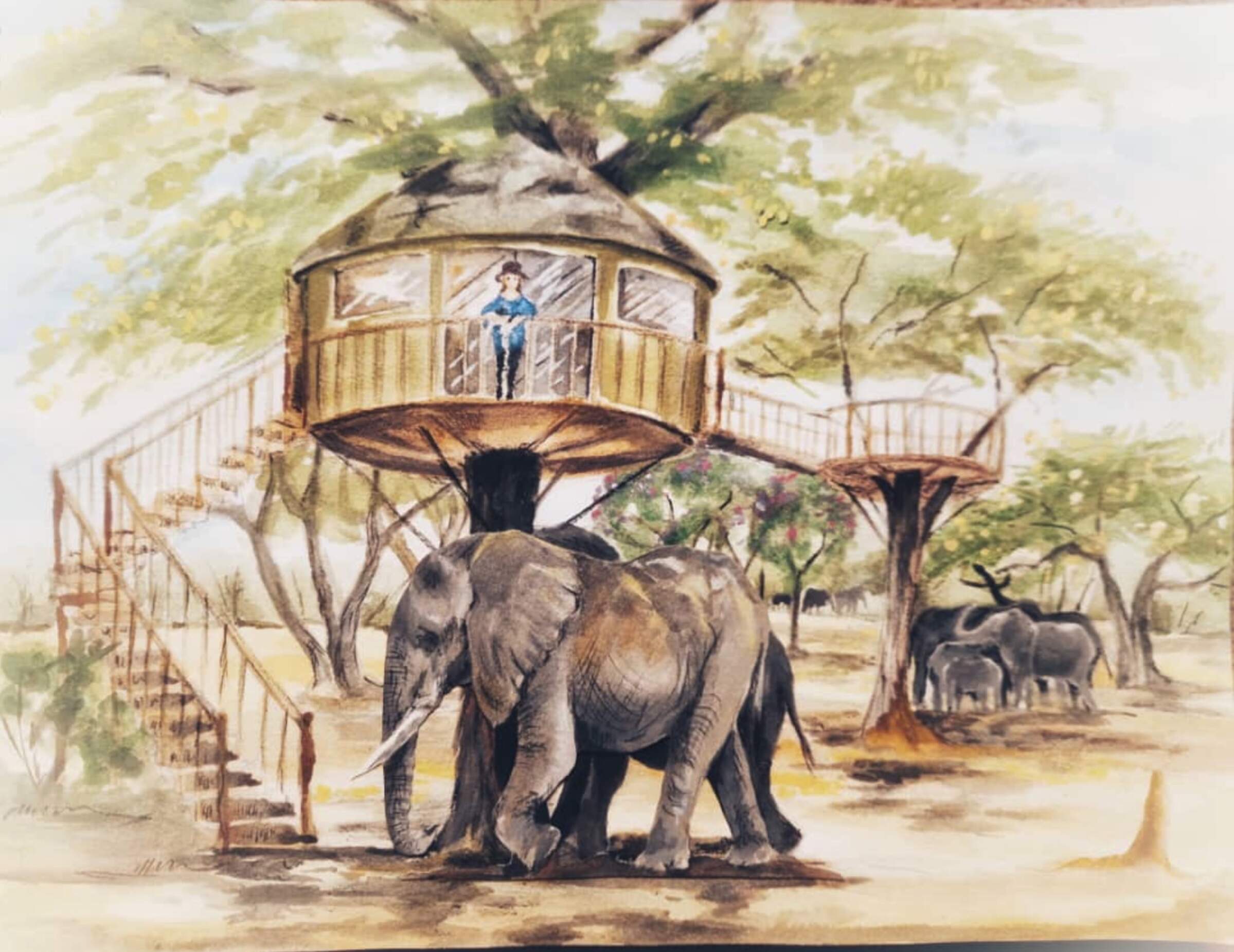
Tum Tum
The Tum Tum Treehouses are due to open in late 2025. Details on this exciting development are still scarce, so watch this space.
Our traveller’s wildlife sightings in Hwange National Park
Hwange National Park appeals to keen wildlife enthusiasts as it's home to a vast array of species. It's particularly famous for its large elephant population, which so often congregate at the waterholes here, and the packs of African wild dogs, whose complex social behaviours and hunting skills have been studied here.
Its southern side is pure Kalahari, and so supports a few gemsbok and brown hyena; rarities elsewhere in Zimbabwe. The beautiful sable and roan antelope are often seen, as are the spectacular greater kudu.
Other key predators include lion, leopards, cheetahs and spotted hyenas are, like their prey, scattered around the park – with lion and spotted hyena the most common, but a fairly good level of leopard and cheetah sightings.
Click on a species below for more information on the top locations in Hwange for wildlife sightings, or see our interactive map showing the best locations for individual wildlife species in Zimbabwe. Read how this wildlife survey works.

99% success

98% success

95% success

93% success

80% success

78% success

72% success

67% success

60% success

50% success

46% success

42% success

29% success

27% success

11% success

9% success

2% success

1% success

1% success

0% success
When to go to Hwange National Park
Our month by month guide: What it's like to visit Hwange in Zimbabwe
Jan
Feb
Mar
Apr
May
Jun
Jul
Aug
Sep
Oct
Nov
Dec
Zimbabwe in January
January falls in the middle of Zimbabwe’s rainy season and is the wettest month of the year. Heavy rainfall occurs most days, flooding seasonal rivers and waterholes, with the occasional sunny spell.
With the high levels of precipitation the wildlife in the national parks becomes widely dispersed, taking advantage of the abundance of food and water, and is easily hidden by the thick, green bush.
While sightings of larger animals are possible, and many species drop their young at this time, game viewing is often sparse. However, many migratory species of bird arrive in Zimbabwe making it a peak month for birding.
The rains create incredibly sticky mud in Mana Pools National Park, preventing access and causing camps to close for the season. The majority of the camps in other parks remain open, with low rates attracting a smattering of visitors.
- Peak of the rainy season: hot & humid with heavy rain most days
- Bush exceptionally thick and green, with poor game viewing
- Species such as impala drop their young
- All camps in Mana Pools closed
- Very few visitors, and low rates at open camps
Our view
A time to avoid if possible
Weather in January
Zimbabwe in February
February remains well within Zimbabwe’s rainy season. Although total rainfall drops, relatively short thunderstorms can still be expected most afternoons. On the plus side, there is a greater chance of some sunshine in-between.
Much of the country remains waterlogged, closing access to Mana Pools and severely restricting walking safaris in other parks. While game drives and canoeing remain an option, the abundance of water disperses animals, and thick grass can make it difficult to spot larger species, but birding remains excellent. Conversely, this is a great time of year to view the landscape, and is excellent for photographers. Sporadic cloud cover and clear air can make for some spectacular sunsets too, particularly over Lake Kariba and the Zambezi River where the reflections off the water add to the beauty.
- Generally wet with frequent thunderstorms & hot humid days
- Poor wildlife viewing due to dispersed animals & thick bush
- Clear air, green landscapes & exceptional sunsets
- All camps in Mana Pools closed
- Very few visitors & low rates at camps that are open
Our view
This is not a great time to visit
Weather in February
Zimbabwe in March
March is the final month of Zimbabwe’s rainy season, when the rains start to trail off and sunny days become the norm. However, some days the clouds can still build, breaking into thunderstorms in the afternoon.
Mana Pools remains closed throughout the month but the majority of camps in Hwange, Matusadona and Gonarezhou remain open. Here, the landscape is green and alive, with migrant species of birds taking advantage of the abundant insect life. Larger animals remain elusive though, and walking safaris remain restricted.
By this time of year, the rains have normally trickled down to the Zambezi River and the flow of water over the Victoria Falls starts to increase, but without kicking up too much spray to obscure the views.
- Last month of the rainy season: hot, humid days with occasional storms
- Lush vegetation means good birding, but poor game viewing
- Views of the Victoria Falls improve
- All camps in Mana Pools closed
- Open camps have few visitors & low rates
Our view
This is not a great time to visit
Weather in March
Zimbabwe in April
April marks the end of Zimbabwe’s rainy season and the end of summer. Clear skies are the norm, with just the occasional shower. Temperatures start to drop, failing to reach 30ºC most days and dropping down to around 10ºC at night.
As the rain fades the landscape starts to dry out. While the vegetation remains thick and green, the soil in Mana Pools dries enough for camps to open, and the only camps to remain closed are the most remote bushcamps in Hwange. Although viewing of larger animals remains tricky, the improved weather starts to draw back visitors, as do prices significantly below those in the peak season.
The Zambezi River and flow of water over the Victoria Falls is at its highest, although large amounts of spray diminish views of the waterfall itself.
- Transitional period, with much lower rainfall & falling temperatures
- Wildlife is still dispersed & hard to see, but sightings improving
- Views of the Victoria Falls often obscured by spray
- Camps in Mana Pools open
- Visitors start to return & camps increase their rates
Our view
A good time to visit, with pros & cons
Weather in April
Zimbabwe in May
The first month in the dry season, May is also Zimbabwe’s first month of winter. If the rains are particularly late in a given year, you may catch the odd shower, but you can expect clear and sunny days the majority of the time. While it’s warm in the daytime, temperatures drop to single digits at night, so bring a warm jumper and gloves for early morning drives.
With the rain having cleared the air, the sky is bright blue, and it’s the best time of year for photography.
Even the most remote camps in Zimbabwe are now open. With the lack of rainfall, vegetation dies back significantly, and seasonal rivers return to sand. Not only does this open up the possibility of walking safaris, but wildlife viewing becomes much more reliable.
- Start of the dry season, with milder days and cold nights
- Game viewing significantly improves as vegetation dies back
- Vegetation starts to turn from green to brown
- Best time for photography with crystal clear air
- Visitors start to return; all camps open & rates increasing
Our view
A very good time to visit
Weather in May
Zimbabwe in June
During June you can virtually be guaranteed of dry and sunny days, although temperatures continue to drop, and can get close to freezing at night in Hwange National Park. Jumpers, jackets and gloves are strongly recommended for early mornings and evenings.
The opportunities for wildlife viewing improve throughout the month as the landscape rapidly dries, and the animals start to gather on the banks of the Zambezi River and around Hwange’s waterholes.
Water levels in the Zambezi River start to drop, reducing the amount of spray kicked up at the Victoria Falls and greatly improving visibility, but still allowing a full curtain of water to cascade over the edge.
- Middle of winter, with night-time temperatures close to freezing
- Game viewing significantly improves throughout the month
- Views of the Victoria Falls are at their best
- Noticeable increase in visitor numbers
- Camps considerably more expensive
Our view
A very good time to visit
Weather in June
Zimbabwe in July
July sits in the middle of Zimbabwe’s dry season. Although it’s warm at midday, temperatures are generally cold and in Hwange it’s been known to drop below freezing at night, with the lower-altitude Mana Pools feeling a bit warmer.
With wildlife clustering around the few remaining waterholes, sparse vegetation, and some of the best views of the Victoria Falls, this is one of the most popular times to travel, with camps charging peak season rates to reflect this. That said, visitor numbers to the country in general remain low, and outside of the Victoria Falls it’s rare for any areas to feel crowded.
- Middle of the dry season with almost no chance of rain
- Clear sunny days, but very cold nights
- Wildlife viewing good; game drives and walking safaris unrestricted
- Views of the Victoria Falls at their best
- Camps charging peak season rates
Our view
A very good time to visit
Weather in July
Zimbabwe in August
While August is the end of winter and temperatures are starting to creep up, mornings and nights are still cold, and game drives in open vehicles can feel particularly chilly. Well into the dry season, the landscapes will have mostly transformed from green to brown and wildlife viewing in Zimbabwe’s national parks is approaching its best. Due to dust kicked up into the atmosphere and smoke from bush fires you may start to notice a haze on the horizon, but this doesn’t significantly impact photography.
August is one of the most expensive months, and the pleasant weather and decent game viewing attracts lots of visitors. While the national parks rarely feel crowded, Victoria Falls accommodation can sell out a year in advance.
- Warm, sunny days but cold mornings & nights; almost no chance of rain
- Wildlife viewing nearly at its best
- Landscape turns brown, & an atmospheric haze develops
- All camps charging peak season rates
Our view
Fantastic: the very best time to visit
Weather in August
Zimbabwe in September
Temperatures in September rarely drop below 15ºC, but are yet to reach the oppressive highs of summer. It will normally have been five months since the last drop of rain, so antelope and elephants cluster around whatever water remains, with predators never too far away.
The landscape is very brown, and the haze building on the horizon takes some of the colour out of the sky, so while animal subjects are plentiful, the background is not ideal for photography.
The combination of incredible wildlife viewing, hot and sunny weather, and cheaper flights outside of the school holidays make this the most popular time of year to travel, and availability at the camps can become limited up to a year in advance.
- The best month for weather, with a pleasantly warm temperature range
- One of the best months for game viewing
- Victoria Falls starting to dry but still impressive on Zimbabwean side
- All camps are charging peak season rates
- Most popular time to travel, & space can be limited
Our view
Fantastic: the very best time to visit
Weather in September
Zimbabwe in October
October is the last month of the dry season with little chance of rain but building humidity. While the higher elevation of Hwange National Park limits temperatures to the 30s Celsius, they can easily top 40ºC in Mana Pools.
With little vegetation or water, wildlife is drawn to the few remaining water sources and viewing is at its best; visitors who brave the heat can be rewarded with some exceptional sightings, although haze in the air diminishes photos. Maximum visibility and dense wildlife concentrations can also make for very rewarding walking safaris, although the heat can make them uncomfortable.
Water levels in the Zambezi at the Victoria Falls drop significantly, and large stretches of the waterfall are a dry cliff-face – although it never dries completely. Camp rates remain at their peak, but visitor numbers drop as people avoid the heat.
- Last month of the dry season; very hot with building humidity
- Wildlife viewing at its very best
- Dust & smoke in the air diminish photographic opportunities
- Victoria Falls starting to look very dry
- Camp rates remain at their peak
Our view
A very good time to visit
Weather in October
Zimbabwe in November
November is a transitionary period, with high temperatures and humidity. While they can’t be predicted with any precision, the first rains normally arrive halfway through the month, in the form of thunderstorms lasting a few hours each day.
Early November is a popular time to travel as the camps drop their rates, so if you’re lucky you can get peak-season game viewing at low-season rates. This is a gamble though as if the rains do arrive, animals are no longer limited to a few dangerous waterholes and will disperse into the bush. While all the camps in Mana Pools intend to remain open, the rains can make the airstrips unusable so you may find yourself moved to a different park, a risk that increases through the month.
- Typically the start of the rains in Zimbabwe
- Temperatures & humidity levels remain high
- Wildlife viewing rapidly diminishes as the rains arrive
- Camps remain open, but risk early closure in Mana Pools
- Much cheaper time to travel as camps drop their rates
Our view
A good time to visit, with pros & cons
Weather in November
Zimbabwe in December
By December the rainy season has begun in earnest; this is one of the wettest months in Zimbabwe, with heavy thunderstorms most afternoons and occasionally continuous rain for a couple of days. While temperatures start to cool down the high levels of humidity can make the heat feel more oppressive.
With the rains comes an explosion of green growth, and the dust and smoke are washed out of the air. The resulting scenery – with the occasional bright blue skies – can be fantastic for photographers. Thick vegetation and plentiful water makes viewing of larger animals tricky, but with migratory species arriving the birding is at its best.
All camps in Mana Pools and the remote Hwange camps close, with those remaining open charging their lowest rates.
- One of the wettest months in Zimbabwe
- High temperatures & levels of humidity
- Wildlife viewing poor, but birding good
- Lush green landscapes & clear air; great for landscape photography
- All camps in Mana Pools closed
Our view
This is not a great time to visit
Weather in December
Map of Hwange National Park
Bordering Botswana, Hwange National Park is Zimbabwe's largest game park with an area of 14,600km2. Its sheer size means that its scenery, vegetation and game vary hugely.
The south of Hwange is a pure Kalahari environment: a flat and relatively arid sand-sheet of fossil dunes and inter-dune valleys. Zoom in on the satellite map and you’ll see the east-west lines of the fossil dunes particular clearly south-west of Jozibanini Camp.
Northern Hwange is completely different: a rugged landscape dominated by hard, stony hills and flat plateaux. This is dotted with kopjies and veined with ephemeral streams and rivers running through the extensive mopane woodlands. A few have been dammed, creating a series of permanent small lakes that the animals love – like Mandavu and Masuma.
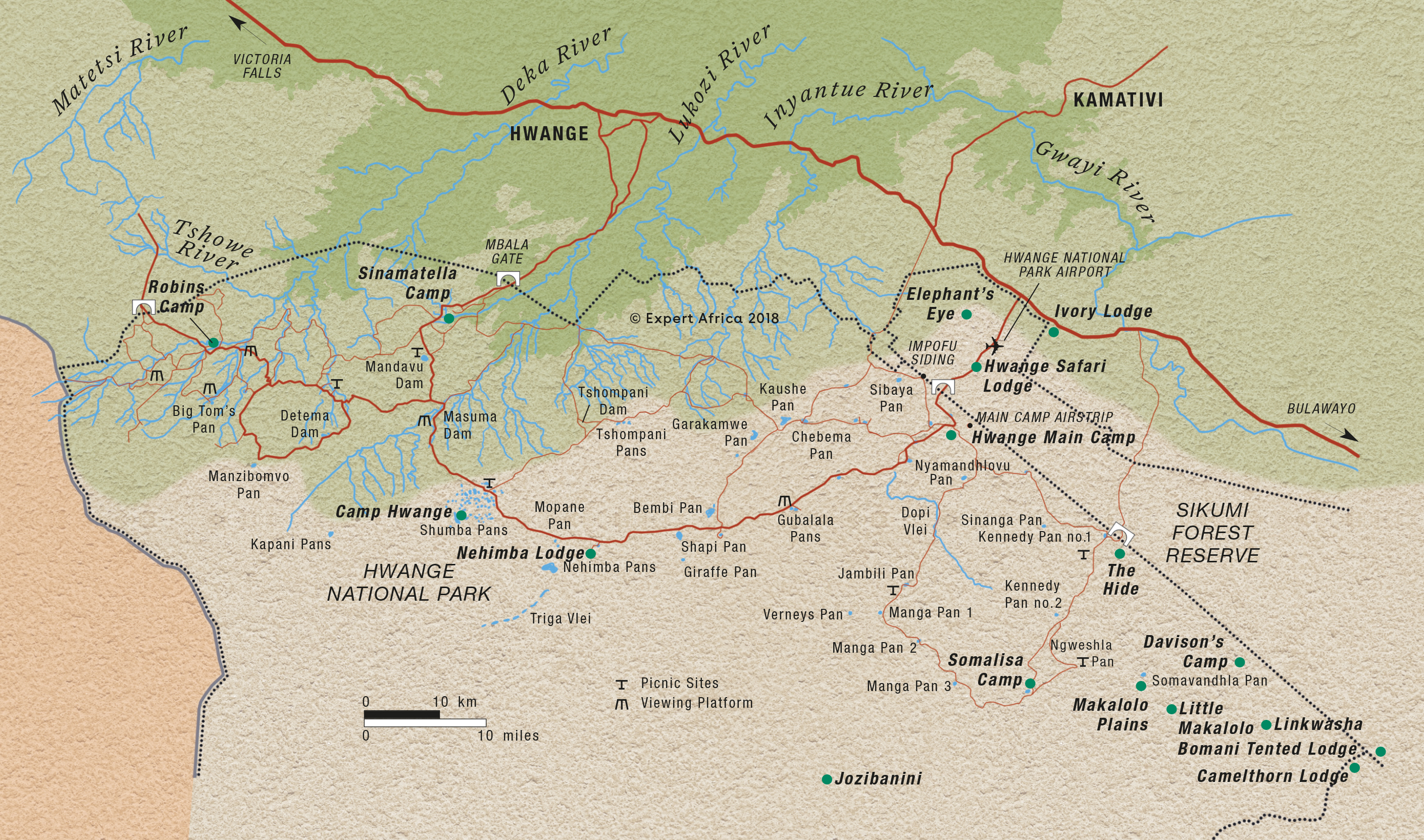
Safaris to Hwange National Park
In Hwange, Zimbabwe’s largest park, its rugged north contrasts starkly with the undulating Kalahari Plains in the south. So it’s a great destination for a full week or so for safari aficionados – see the Side-Striped Jackal for an example.
However, look further and Hwange is a natural destination to combine with the thundering Victoria Falls – just a few hours away by road or minutes in the air. And if flying, then consider linking Hwange with the iconic Mana Pools, in Zimbabwe’s Zambezi Valley, on the Nyala or Pied Kingfisher safaris.
To experience more of the country on the ground, rather than simply hopping over it, look at the Klipspringer or Ground Hornbill safaris – which bring in the magical and very different Matobo Hills, with its rhino-trekking, history and culture.
If you want to also take in Botswana’s Okavango and Chobe as well as Hwange, see the Great Egret Safari is a great example of how well it can work.
As always, these are just ideas; we'll always tailor-make a trip for you. Call us now to find your perfect safari.

Great Egret Safari
12 days • 4 locations
MAUN AIRPORT TO VICTORIA FALLS AIRPORT
This wonderfully varied adventure combines Botswana's Okavango Delta and a live-aboard houseboat safari on the Chobe River, with big game in Zimbabwe's dry Hwange National Park and the stupendous Victoria Falls.
US$10,360 - US$17,410 per person

Lion Safari
7 days • 2 locations
VICTORIA FALLS AIRPORT TO VICTORIA FALLS AIRPORT
The classic Expert Africa Zimbabwe safari. Combining two of our favourite independent camps, each run by celebrated guides, exciting game drives, world-class walks and canoeing in premier wildlife watching destinations.
US$7,300 - US$10,280 per person

Side-striped Jackal Safari
6 days • 2 locations
VICTORIA FALLS AIRPORT TO VICTORIA FALLS AIRPORT
Get an in-depth experience of Zimbabwe’s colossal Hwange National Park, staying at two experience-focused camps with excellent guiding in contrasting areas. An adventurous safari for the real enthusiast.
US$3,930 - US$6,420 per person

Ground Hornbill Safari
9 days • 3 locations
VICTORIA FALLS AIRPORT TO BULAWAYO AIRPORT
This Zimbabwean odyssey explores Hwange National Park from two small camps, renowned for their great guiding, before ending with insights into cultural history, a little luxury and first-class rhino tracking in the Matobo Hills.
US$5,540 - US$8,560 per person

Klipspringer Safari
8 days • 3 locations
VICTORIA FALLS AIRPORT TO BULAWAYO AIRPORT
An outstanding-value Zimbabwe safari exploring Victoria Falls and two contrasting locations in western Zimbabwe – Hwange and the Matobo Hills – giving you a real feel for Zimbabwe, its people and wildlife.
US$3,040 - US$3,570 per person

Buffalo Safari
9 days • 3 locations
HARARE AIRPORT TO VICTORIA FALLS AIRPORT
Combining Zimbabwe’s Mana Pools and Hwange national parks with stays at intimate six-tent safari camps offering excellent walking, canoeing and game drives. Superb wildlife viewing and a real wilderness-focused experience.
US$8,840 - US$11,910 per person

Grysbok Safari
9 days • 3 locations
VICTORIA FALLS AIRPORT TO HARARE AIRPORT
Discover three of Zimbabwe’s iconic destinations in style, flying between Hwange, Mana Pools and Lake Kariba on this varied safari adventure staying at authentic yet luxurious camps.
US$11,070 - US$16,110 per person

Pied Kingfisher Safari
9 days • 3 locations
VICTORIA FALLS AIRPORT TO HARARE AIRPORT
A luxury safari combining three of Zimbabwe's top highlights. The trip uses some of the finest safari camps in Zimbabwe and is perfect for a family or small group.
US$8,470 - US$11,860 per person
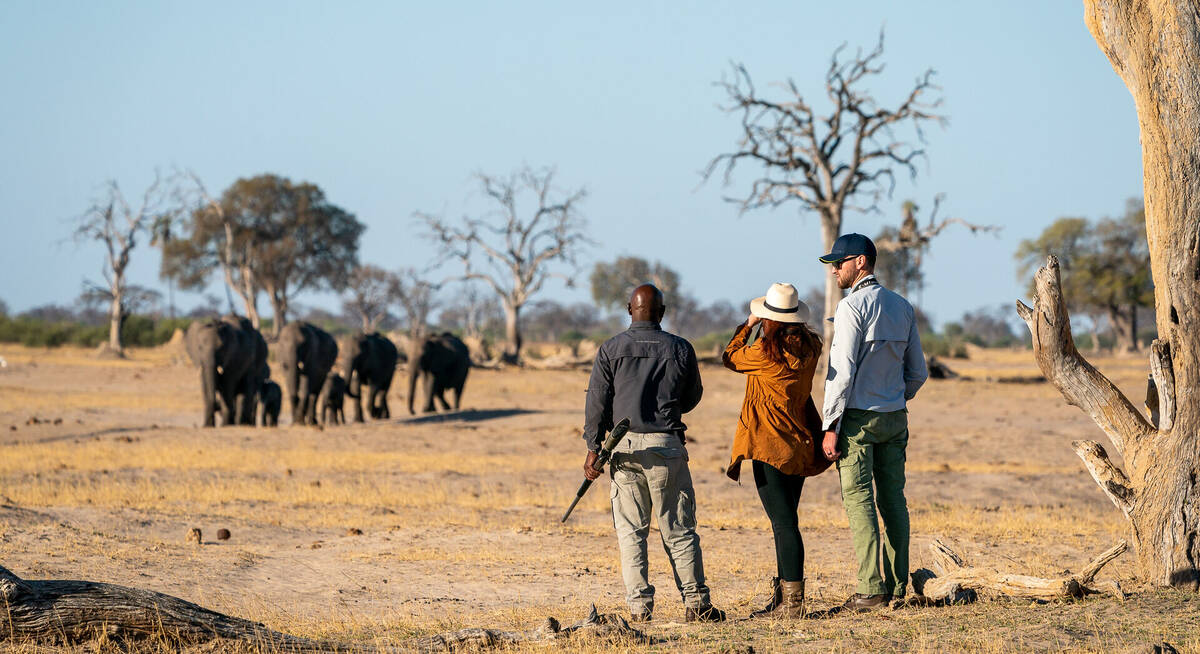
Nyala Safari
10 days • 3 locations
VICTORIA FALLS AIRPORT TO VICTORIA FALLS AIRPORT
A superb luxury safari in iconic Hwange and Mana Pools national parks, staying in a pair of the finest safari camps in Zimbabwe, with a grand finale at Victoria Falls
US$12,060 - US$16,260 per person
Our best 22 lodges and safari camps in and around Hwange National Park
Hwange is massive and Zimbabwe's flagship national park, so it has an array of safari camps and lodges. These are relatively widely spread and visitor numbers in the park are seldom very high, so travellers usually have a high degree of privacy for their game-viewing.
Note distances between camps can be large – sometimes many hours' drive – and so sometimes you'll need to fly between them.
Popular choices currently include Camp Hwange and Hwange Bush Camp, which stands out for their exceptional guiding and immersive bush walks, and Somalisa Camp for its eco-friendly but opulent design, and close encounters with elephants beside its pool.
Our Zimbabwe experts know these camps and areas well, so contact us now to plan your perfect safari adventure to Hwange.

Camp Hwange
Overlooking a waterhole in a remote part of Hwange National Park, Camp Hwange offers great guiding in a pristine wilderness at reasonable prices.

Somalisa Camp
Somalisa is a luxurious, yet remote, safari camp in Hwange National Park, offering walking safaris and game drives.

The Hide
Located in a small, private concession, The Hide is a relaxed and comfortable camp offering submerged hides and great family accommodation.

Hwange Bush Camp
Hwange Bush Camp is a small seasonal camp offering comfortable tents, great food, and superb guiding, and is often used by exclusive groups.

Little Makalolo Camp
Tucked away in Hwange National Park overlooking a waterhole, Little Makalolo Camp combines top guiding with excellent wildlife watching.

Somalisa Expeditions
A simple but stylish camp, Somalisa Expeditions sits in the heart of Hwange National Park, offering walking safaris and game drives.

Davison's Camp
Within the Linkwasha Concession, Davison's Camp offers superb value for money, morning walking safaris and spot-lit drives after dark.

Bomani Tented Lodge
Bomani is a down-to-earth lodge with a range of activities in a remote region of western Zimbabwe, adjacent to Hwange National Park.

Nehimba Lodge
Nehimba is a comfortable, good-value camp in a remote area of Hwange National Park, teeming with wildlife.

Khulu Bush Camp
Just outside Hwange National Park, Khulu Bush Camp features a waterhole popular with wildlife, especially elephants and offers excellent value for money.

Verney's Camp
Verney's Camp is one of the newest offerings in Hwange, located in the wildlife rich, open landscape in the south-eastern section of the park.

Linkwasha Camp
In its own private concession within Hwange National Park, Linkwasha offers excellent wildlife sightings and luxurious surroundings.

Looking for inspiration on where to travel next?
Visit our trip chooser to explore your options and find inspiration for your perfect African adventure
Inspire meFrequently Asked Questions
Hwange National Park FAQs
When planning a trip to Hwange National Park, travellers often have a myriad of questions. For instance, many wonder about the best times to visit, which range from the wildlife-rich dry season (July to October) to the lush and quieter wet season (November to April). Questions also arise about must-see attractions from particular species to the Painted Dog Conservation Centre.
To make the most of your adventure, and to tailor your experience, explore these frequently asked questions as you plan.
What is the best time of year to visit Hwange National Park?
However, note that Hwange is built on rocky and sandy ground – much of which is still passable in the rainy season. So it’s perfectly possible to visit here in the ‘green season’, from November to April, when you’ll find lush landscapes, fewer tourists and lower costs. At this time of year the wildlife is more disperse, so you’ll see fewer animals, however birdwatchers will be compensated by an influx of summer migrants, some in breeding plumage.
Most visitors come here in the dry season, from about May to October. As this progresses, and the landscape dries out, sources of water dwindle and the wildlife congregates around those that remain, making sightings more frequent and predictable.
Within this, note that late July to early September can be quite cold, down to freezing on some nights. So expect to don coats and warm ponchos (usually provided by the camps) on early morning and late evening game drives – whilst the temperatures in the middle of the day are usually gloriously warm.
What are the highlights of Hwange National Park?
Top of our list is certainly a walking safari. Zimbabwe has some of Africa’s best safari guides – and heading out into the bush with one them is a real privilege; don’t miss it!
No visit to Hwange would be quite complete without time spent with elephants – be that a large herd on the plains or, more usually, relaxing as you watch family groups come down to a waterhole.
Night drives, if you can do them, can be a highlight , especially when it’s warmer. In reality, on some days you’re lucky to see a spring hare as you peer into the darkness; on others it seems as if there’s mating lions or a hunting leopard around every corner – and you never know what’s going to be caught in the torch-light.
In the south of the park, do take a look at Ngweshla Pans and Kennedy Vlei areas if you are near; they’re prime game viewing territory during the dry season – large open areas with water that attract great game concentrations.
Similarly, in the rocky north the Mandavu and Masuma dams (man-made lakes) have been favourite spots for some of our team for decades.
Finally, near the park’s main entrance, the informative Painted Dog Conservation Centre offers insights into African wild dog. If you’d like to see this then ask us early in your planning as the logistics can be tricky and always need advanced notice.
How do you get to Hwange National Park?
Most travellers fly in and out, and there are a number of airstrips dotted around the park. So there’s convenient air access to a airstrip near most camps – and this is how most camps prefer their guests to arrive.
The drive here from Victoria Falls is on the long side and road conditions are variable, hence most travellers fly. However, road transfers are possible if requested far enough in advance. Costs for couples are usually comparable to flying; for groups travelling together vehicles transfers can be more economic.
In recent years the access roads into Hwange from the north, from Hwange Town, have become much less easy and pleasant – leading many to route via the Main Entrance, or fly into the park.
What are the different parts of Hwange like?
Hwange extends across for over 14,000km2, encompassing a variety of vegetation zones, where the game and birdlife differ substantially. Outside the north of the park is a contiguous area devoted to wildlife, which stretches to the Zambezi National Park and the Zambian border.
Hwange’s south is covered with Kalahari sandveld: an arid and largely flat sandsheet overlaid with acacia and terminalia woodlands, and interspersed with patches of open grasslands (or ‘vleis’) – the remains of fossil river valleys.
Dotted around, you’ll also find some marvellously still and shady teak forests – now sadly rare elsewhere. The Kalahari has few natural sources of water, but after the rains many shallow calcrete pans do hold water, and some are now topped-up year-round by artificial pumps. These create a focus for the game, especially the large herds of elephant for which Hwange is famous.
On the northern side of Hwange, the Kalahari sands give way to hard, stony hills and plateaux, where ephemeral streams and rivers run through extensive mopane woodlands. A few have been dammed, creating a series of permanent small lakes that the animals love.
What is the wildlife like in Hwange?
Lion, leopard and spotted hyena are the main predators; cheetah are also present, although can be shy. Hwange is a stronghold for wild dogs and there is still a tiny population of black rhino in the north of the park.
Birdwatching can be great in Hwange thanks to a network of permanent water sources. There are high concentrations of dry country raptors including tawny, Wahlberg’s, martial and bateleur eagles.
All of Hwange’s camps offer 4WD game drives and walking safaris – many led by the crème de la crème of Africa’s professional safari guides.
Videos from Hwange National Park
Watch these videos to learn more about Hwange National Park
